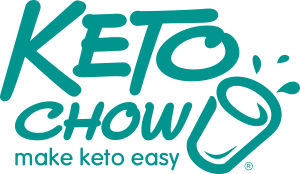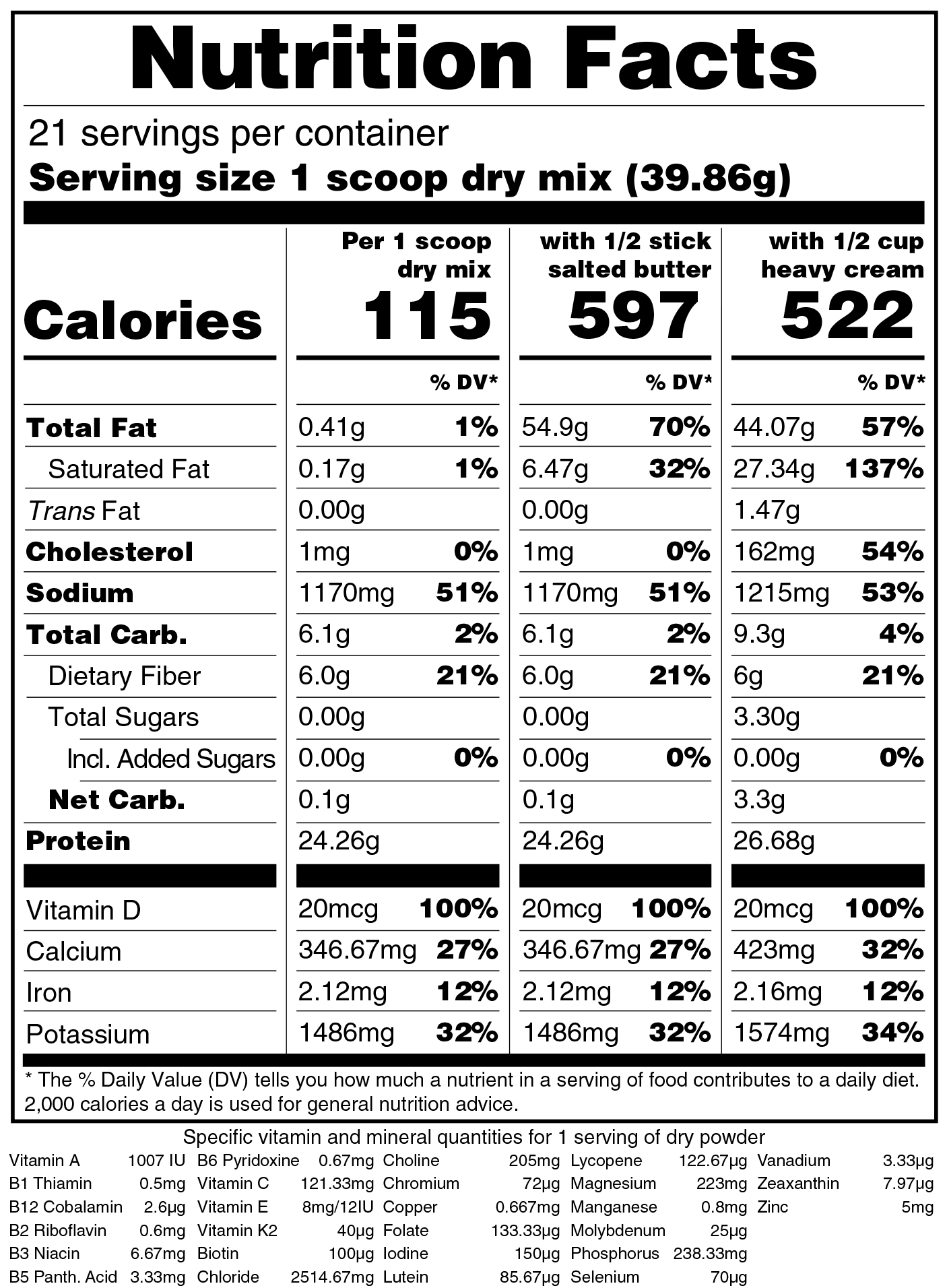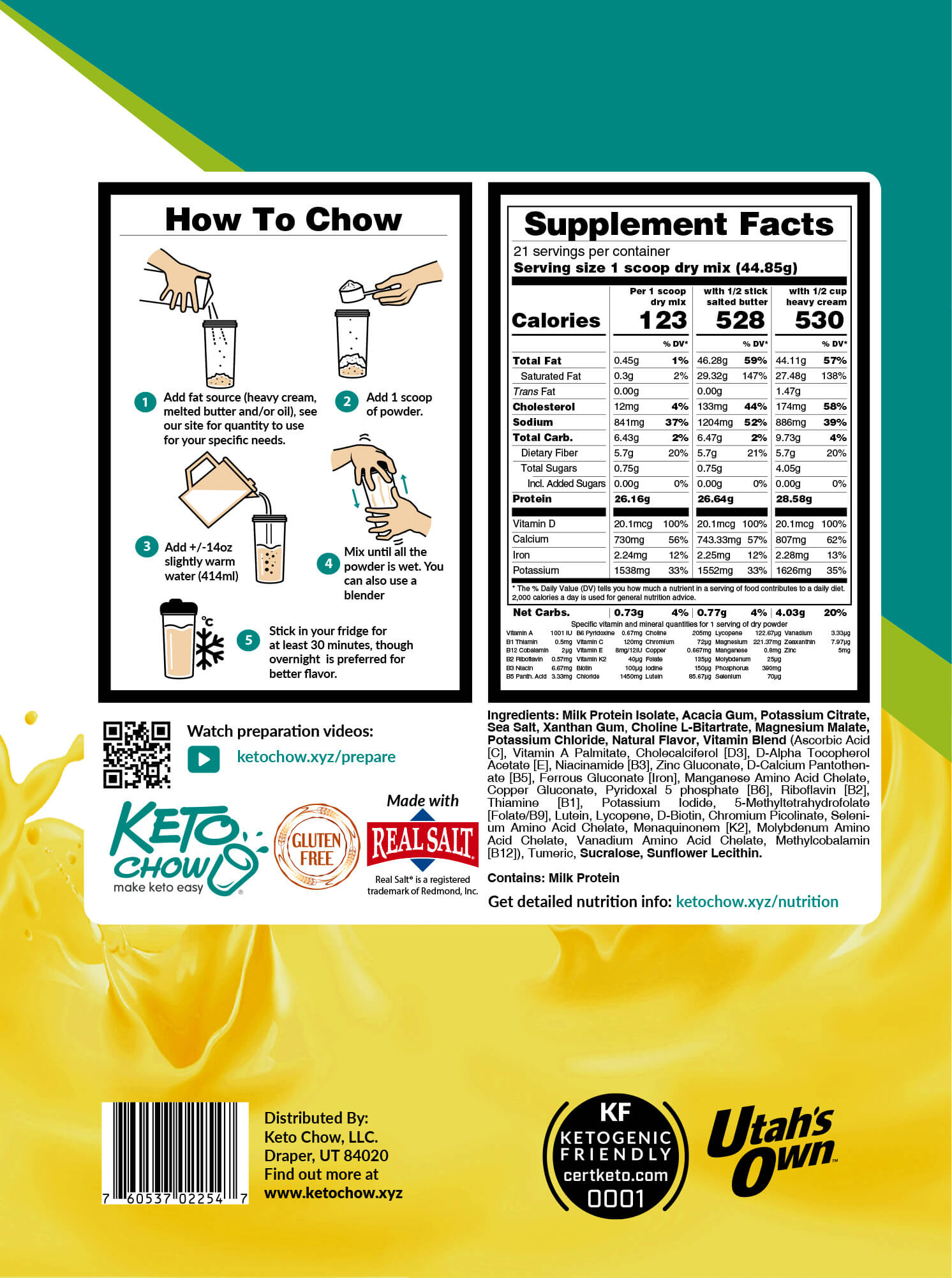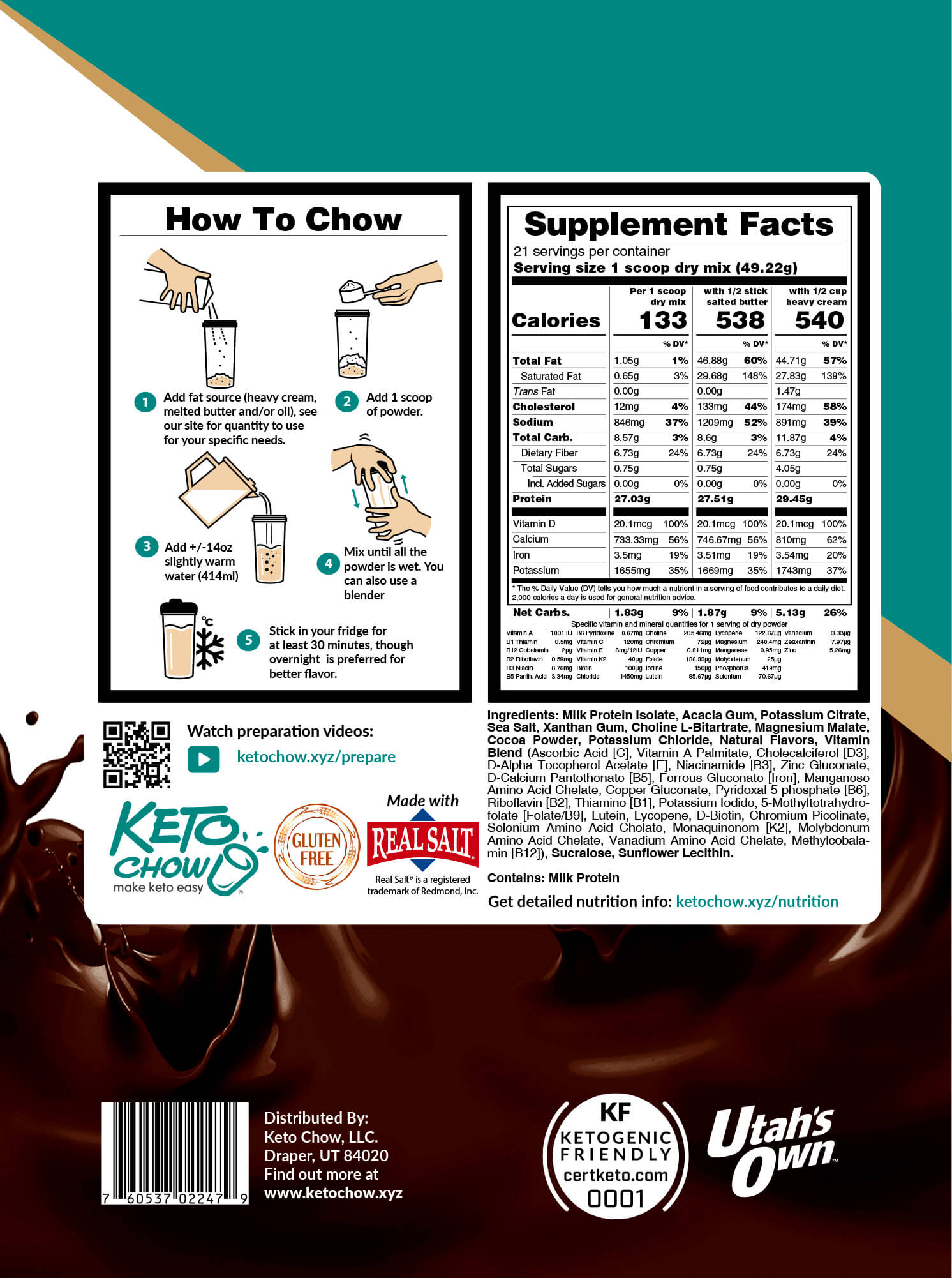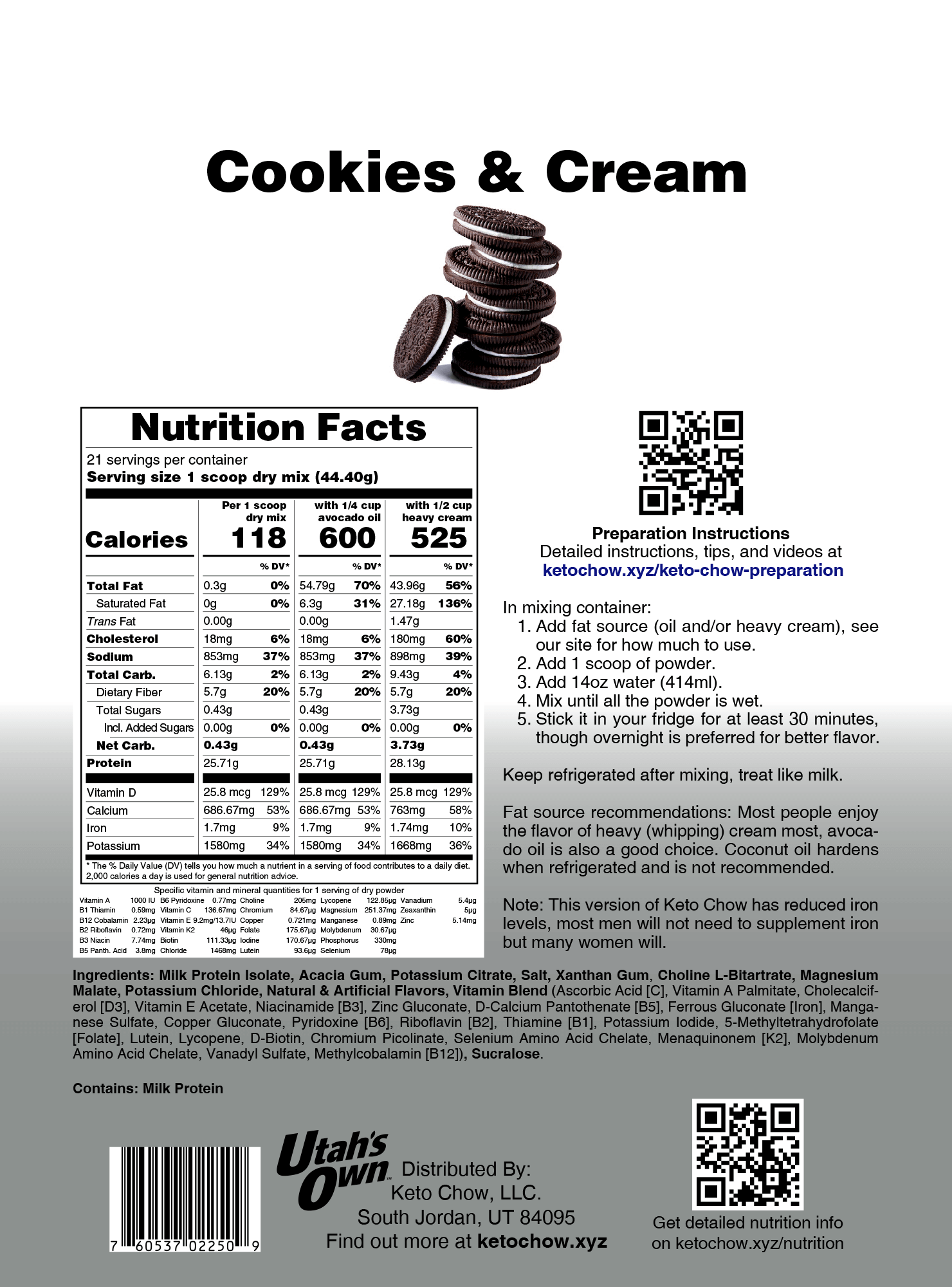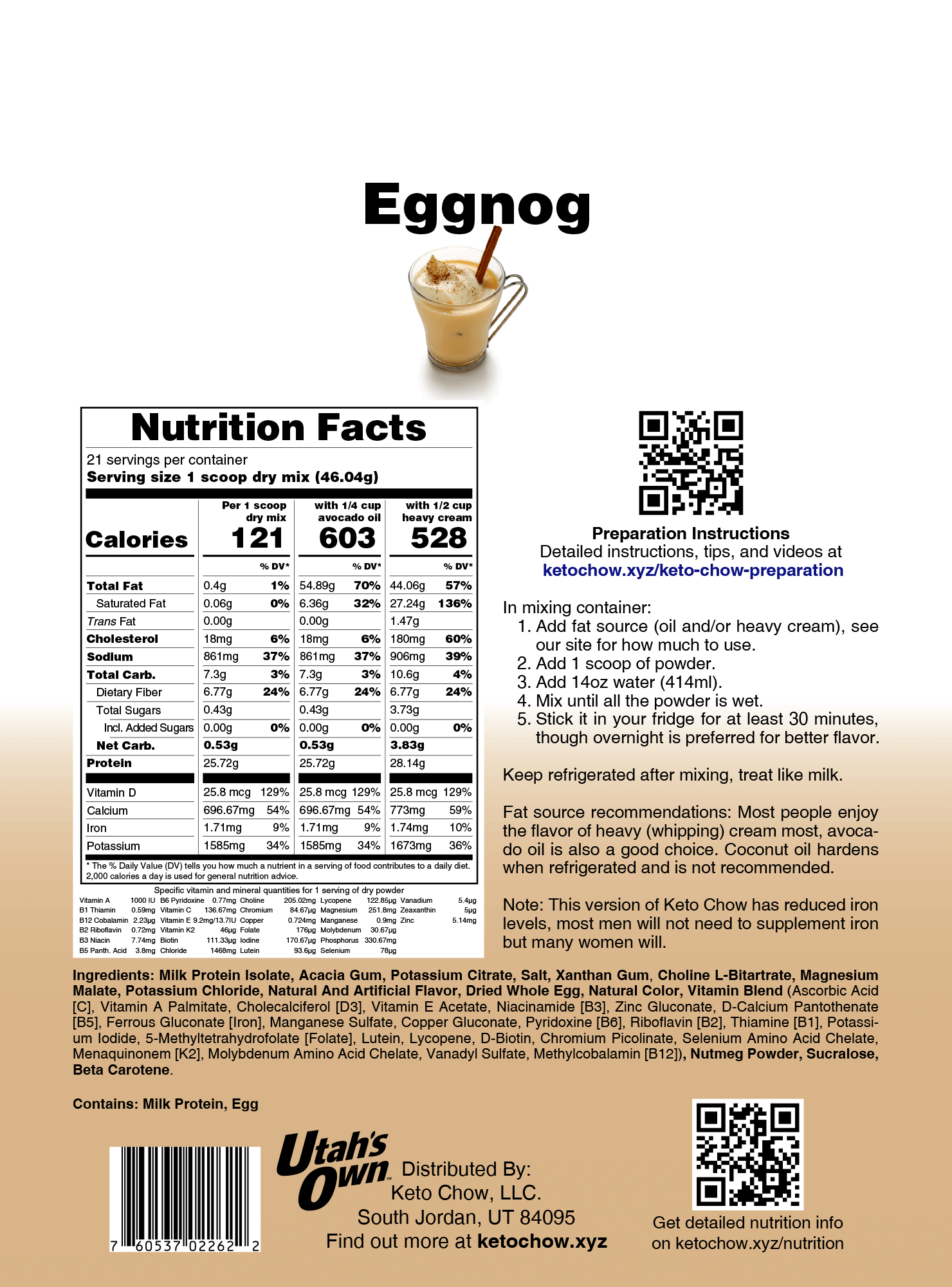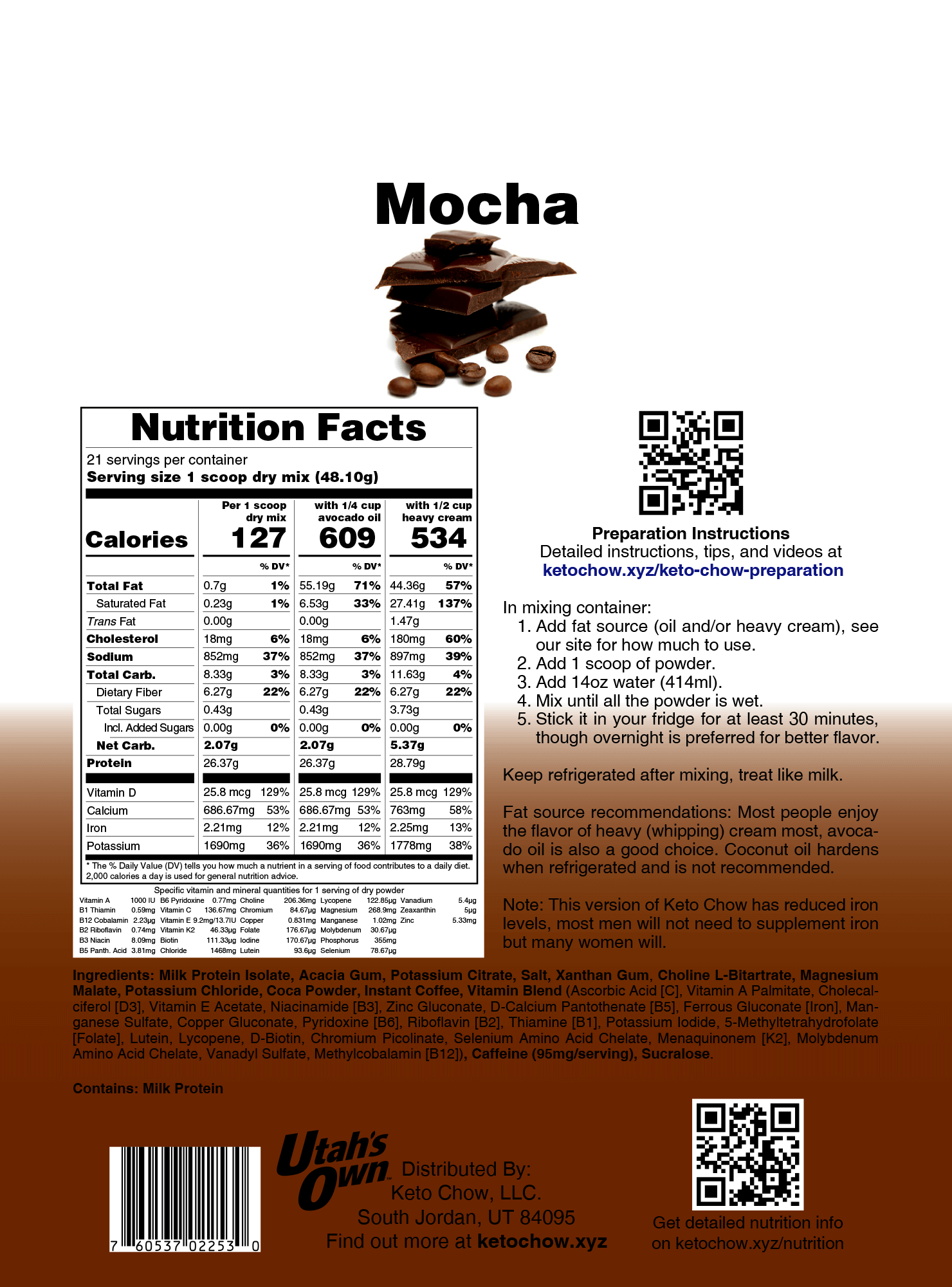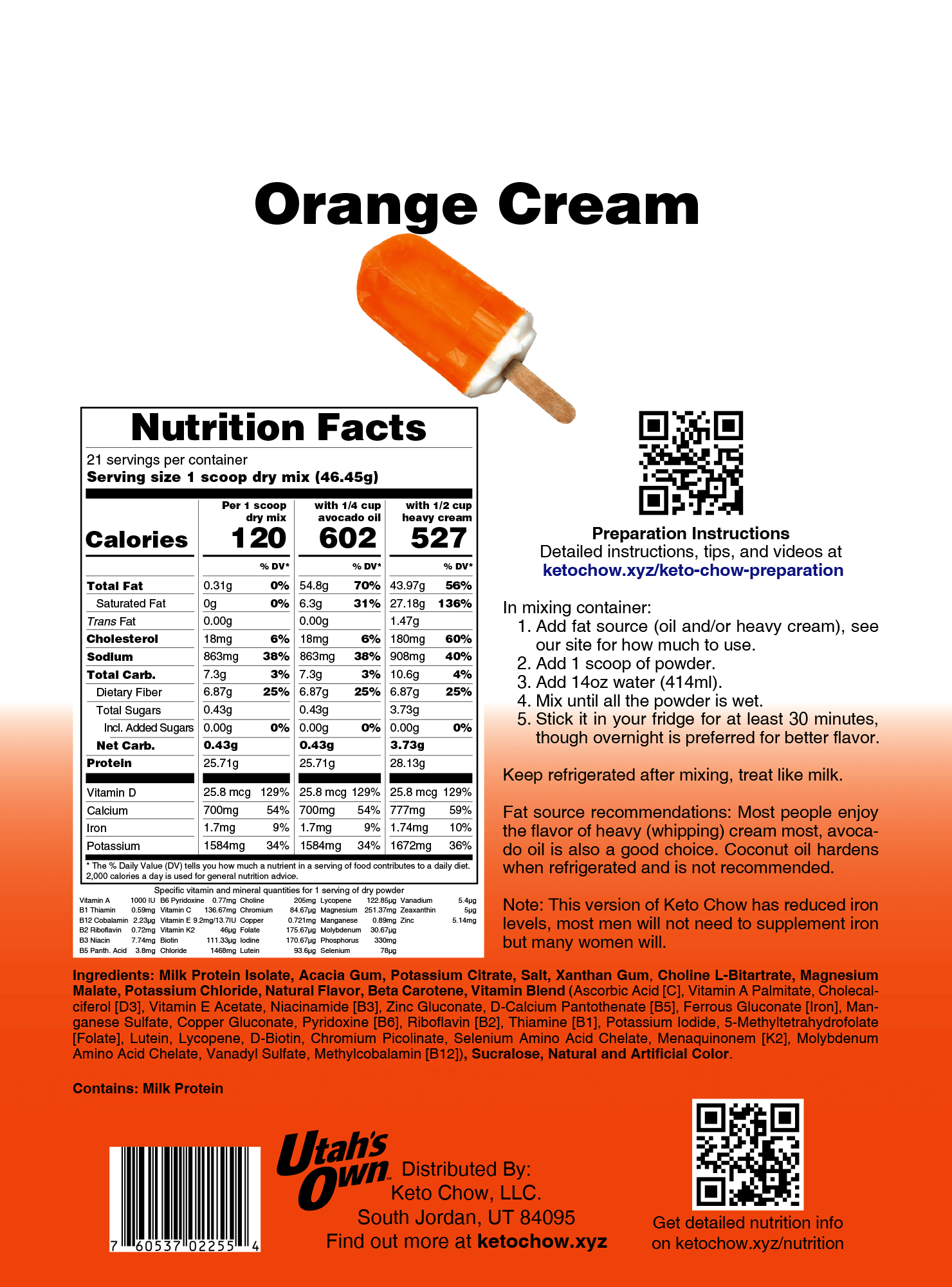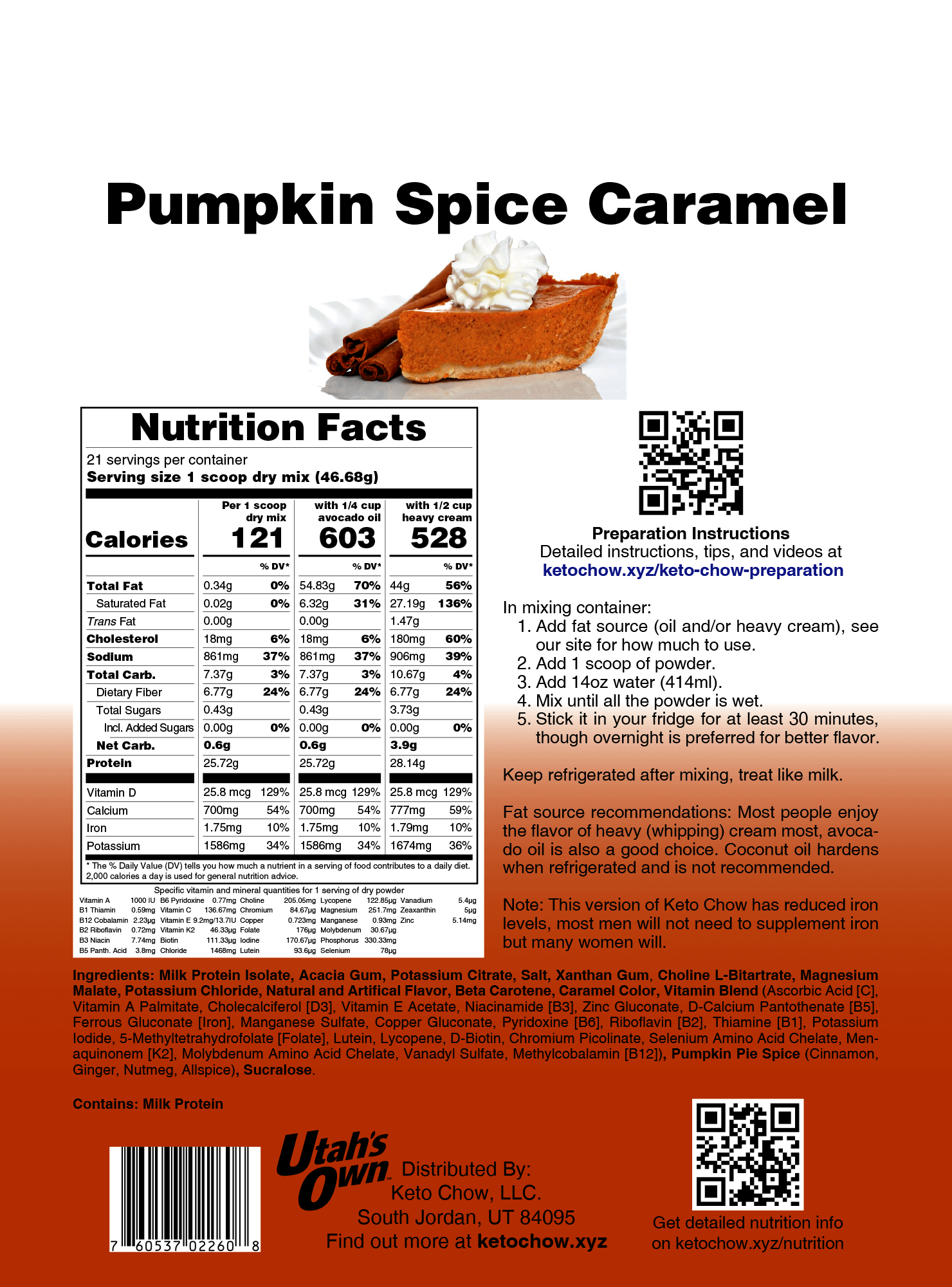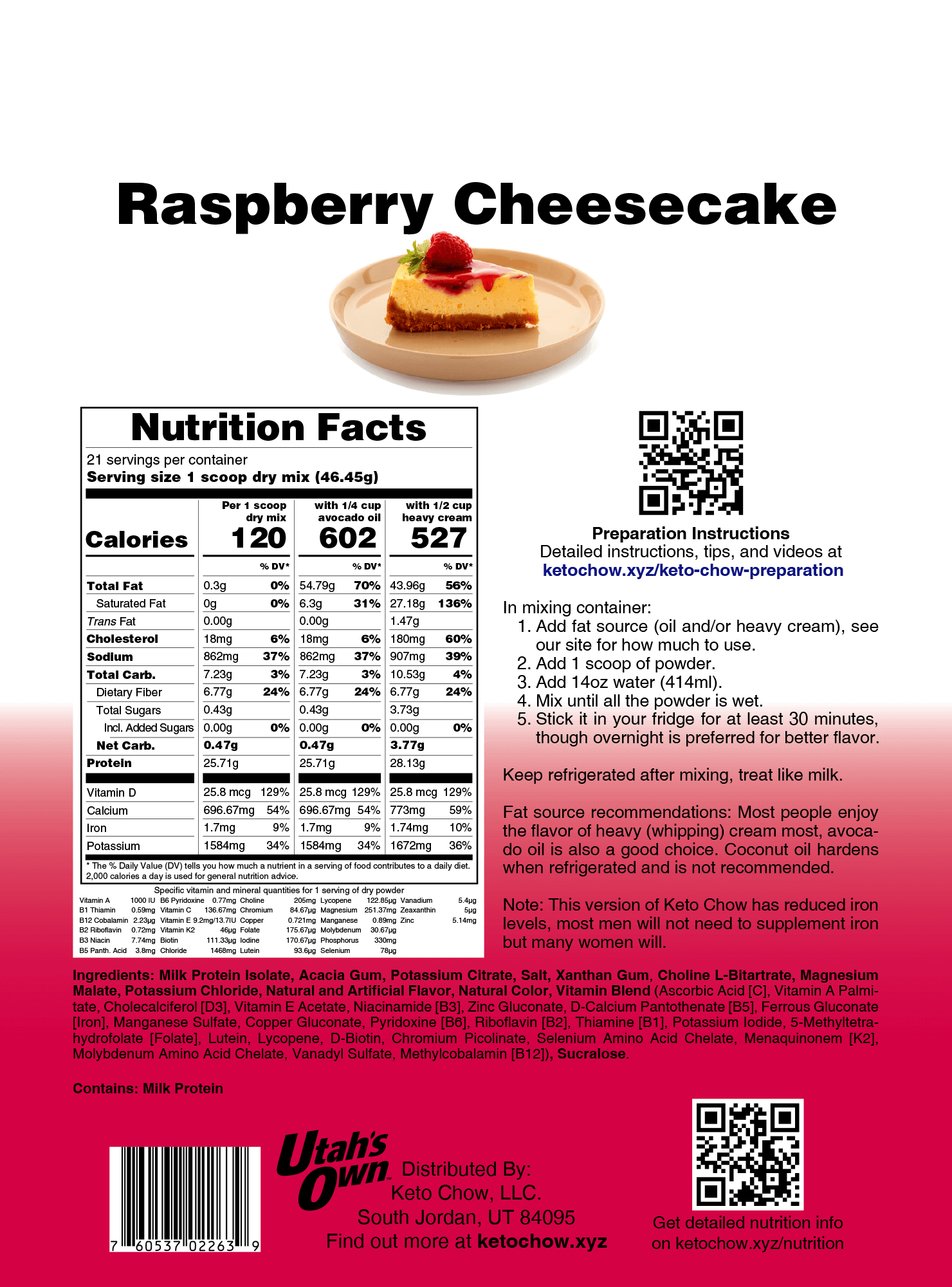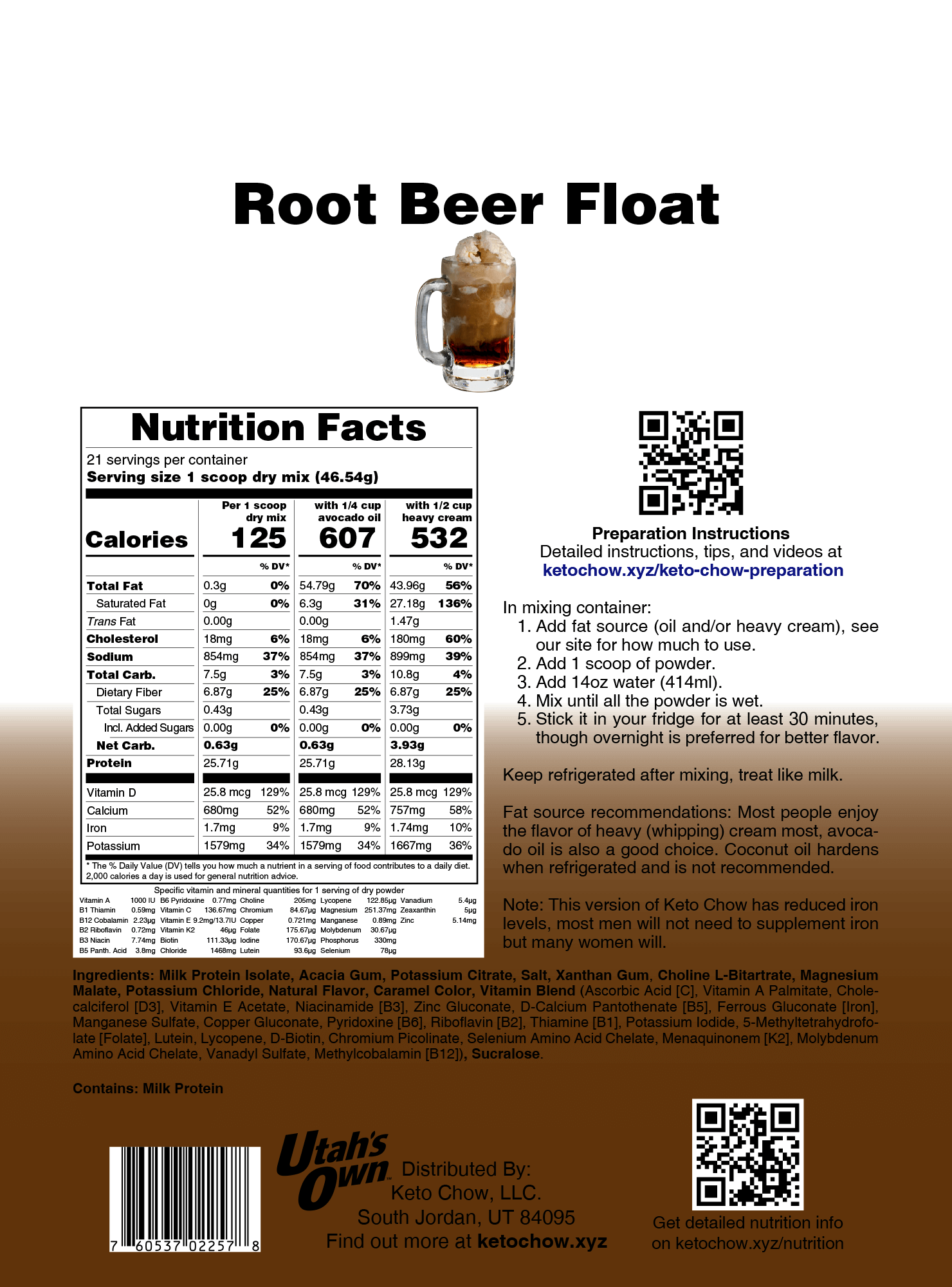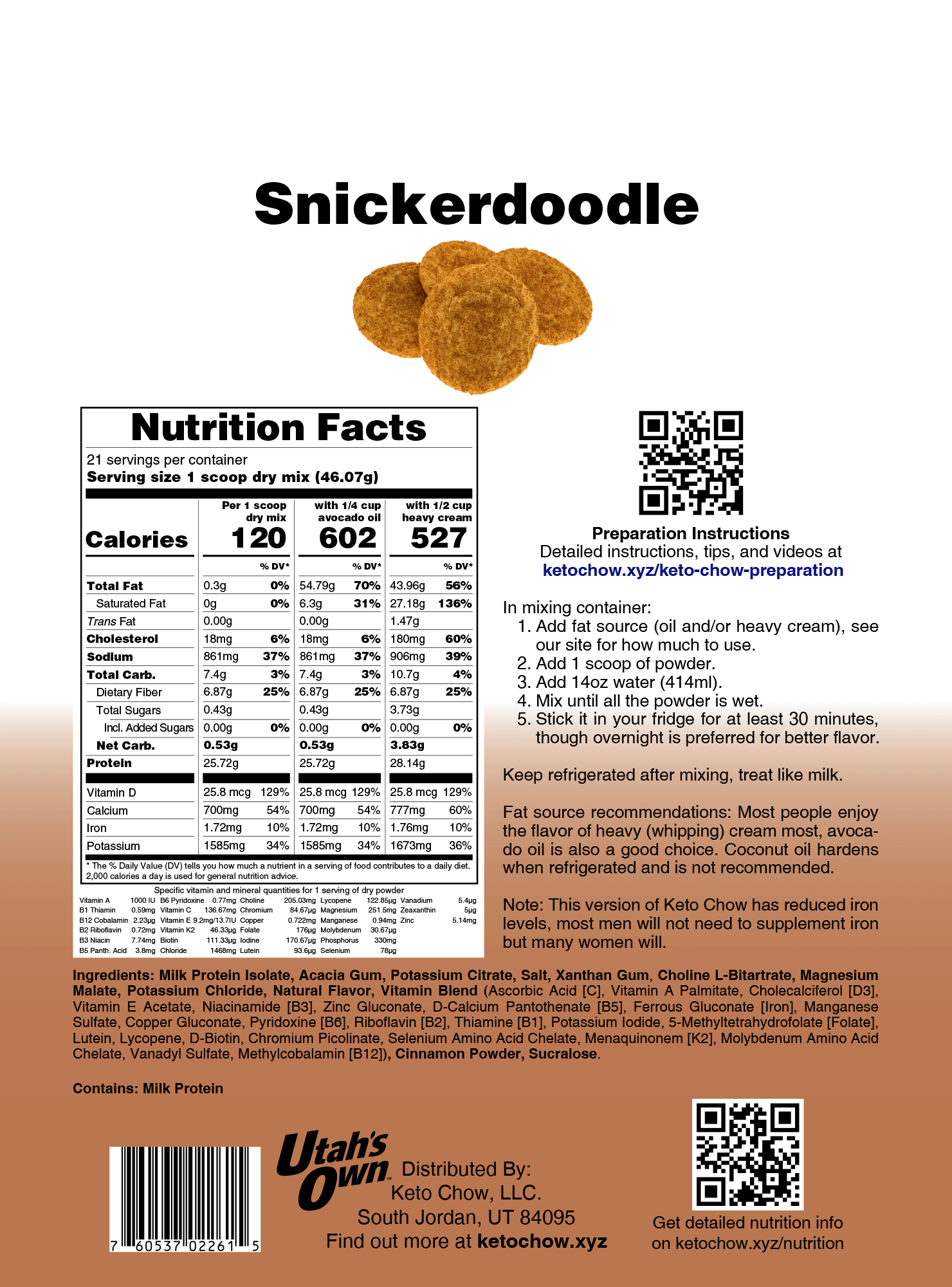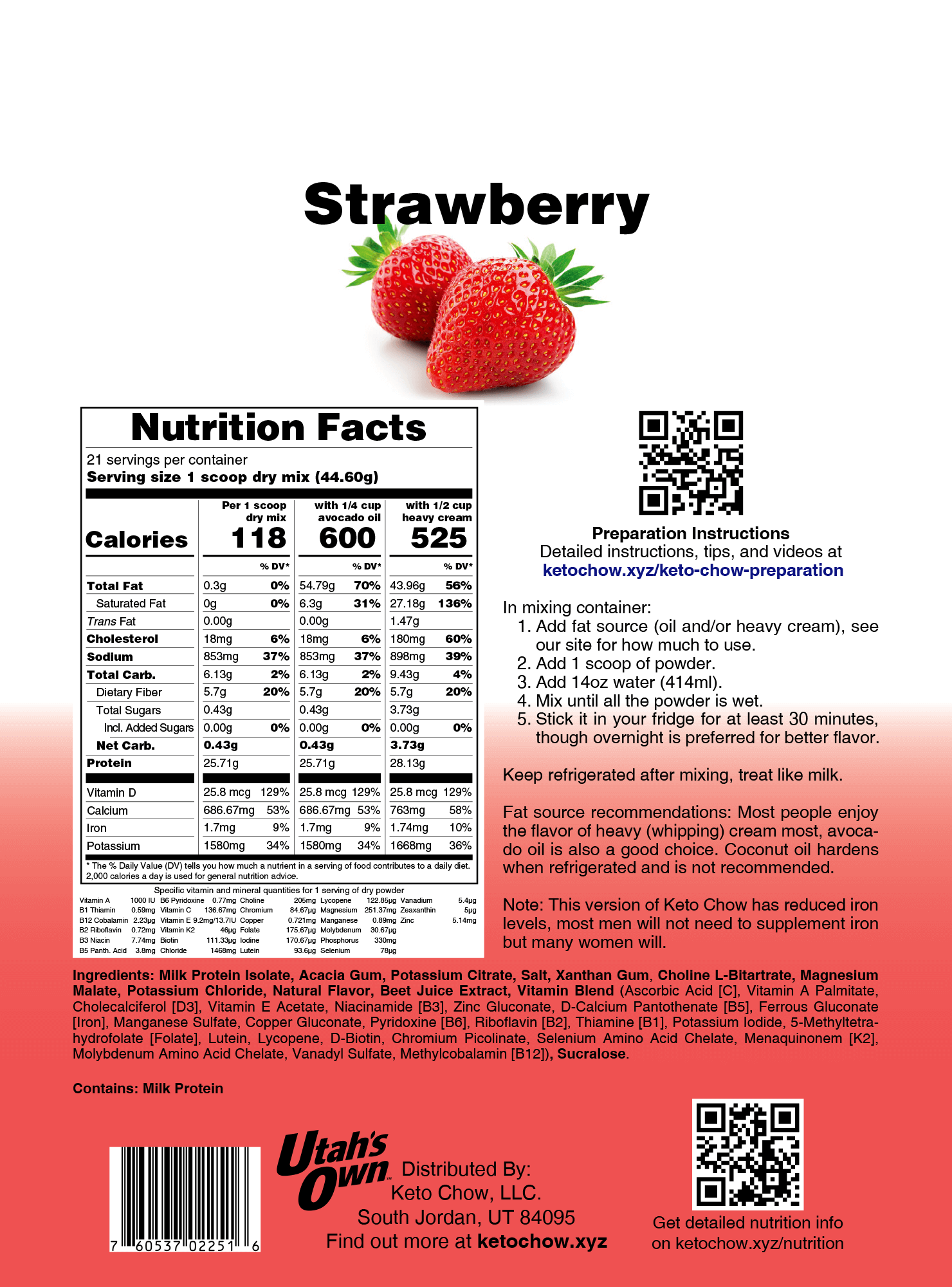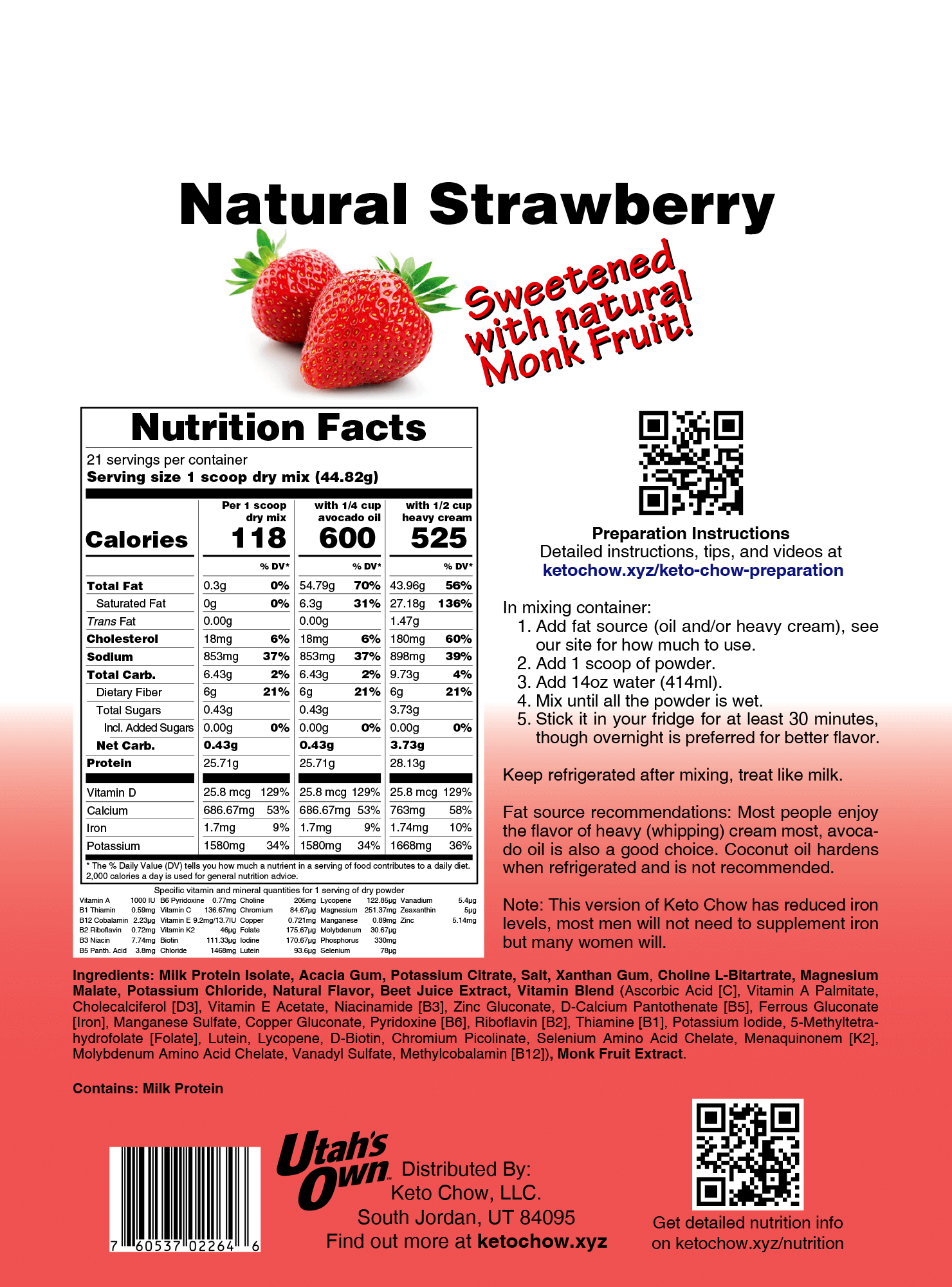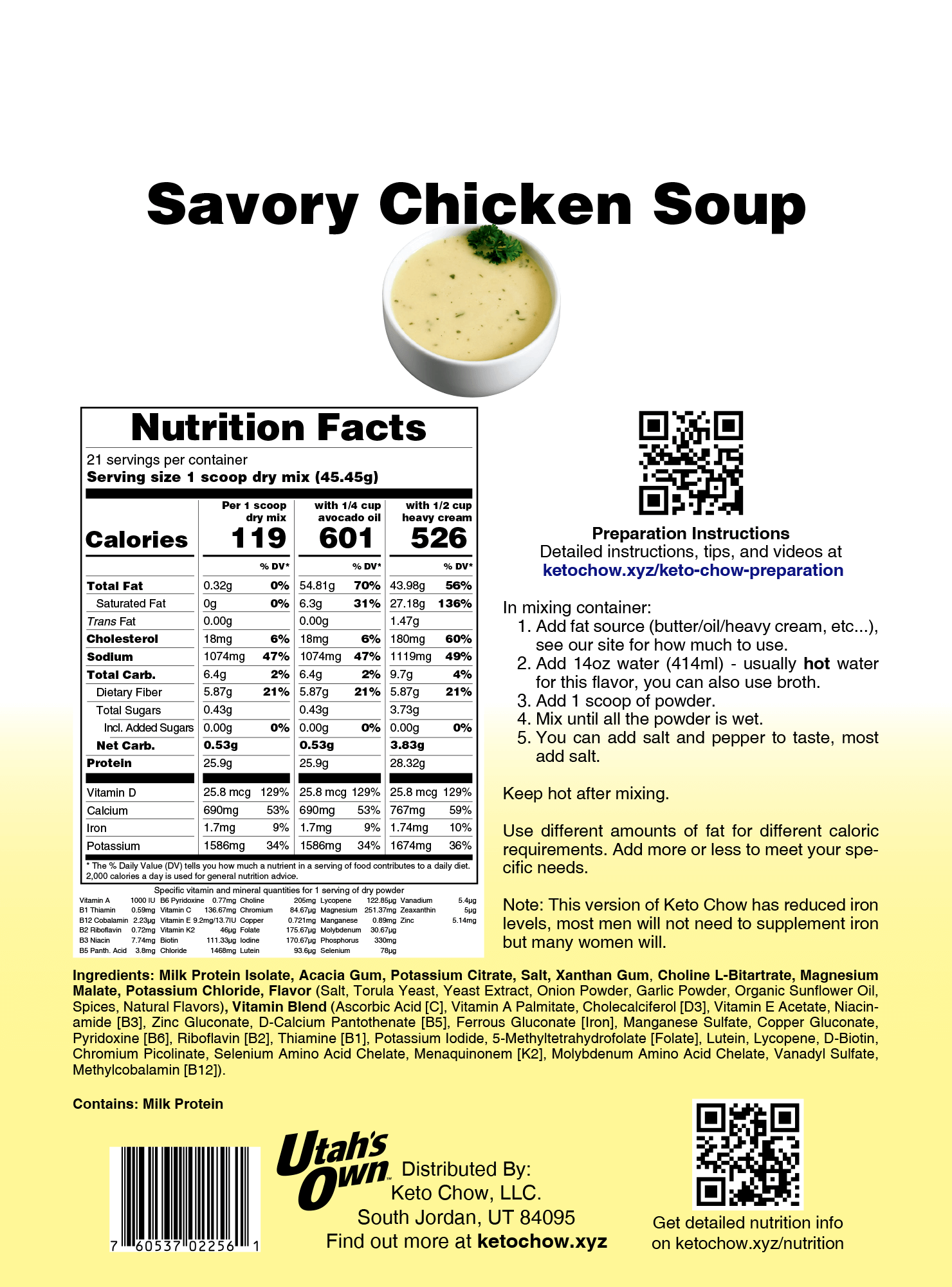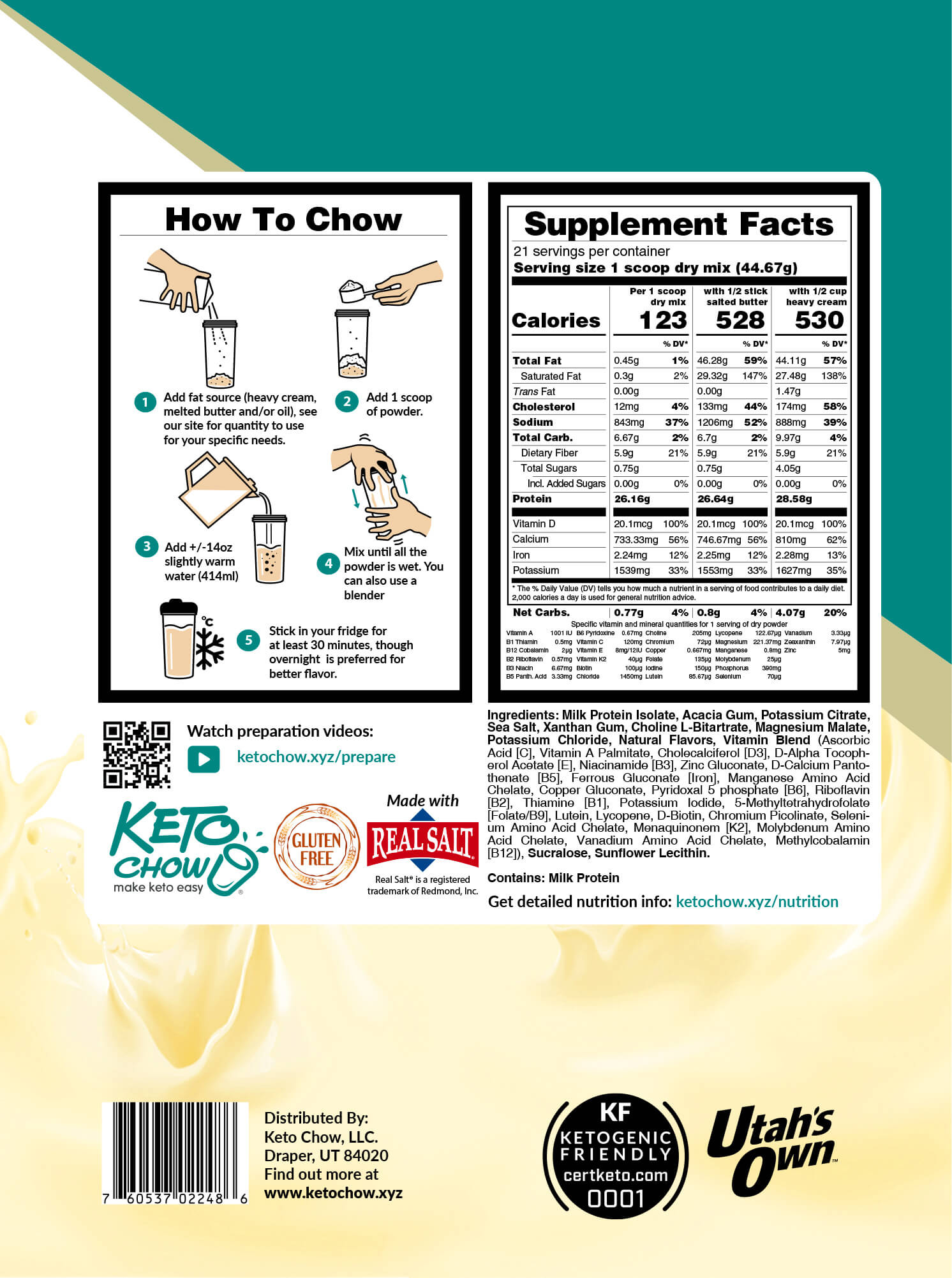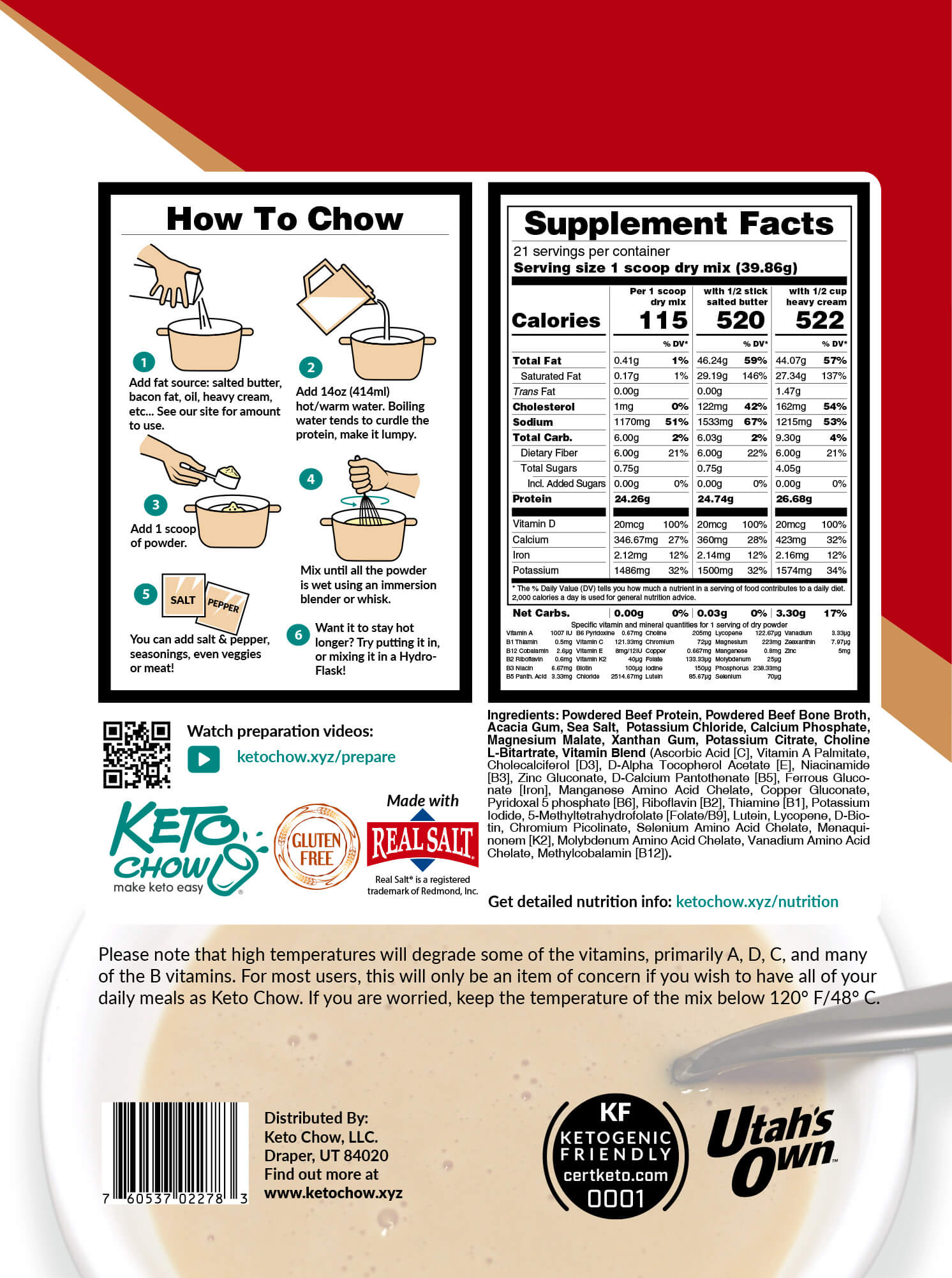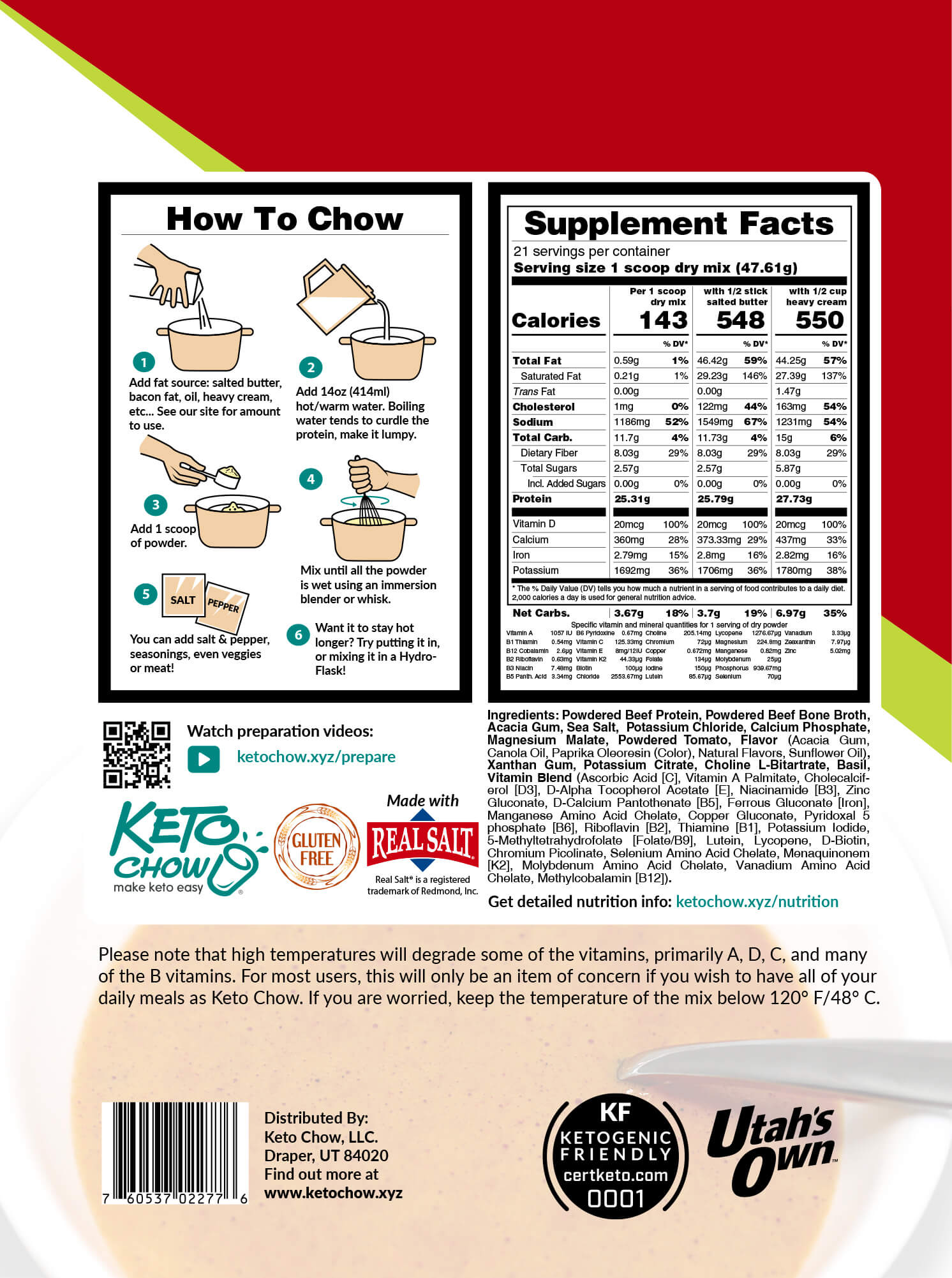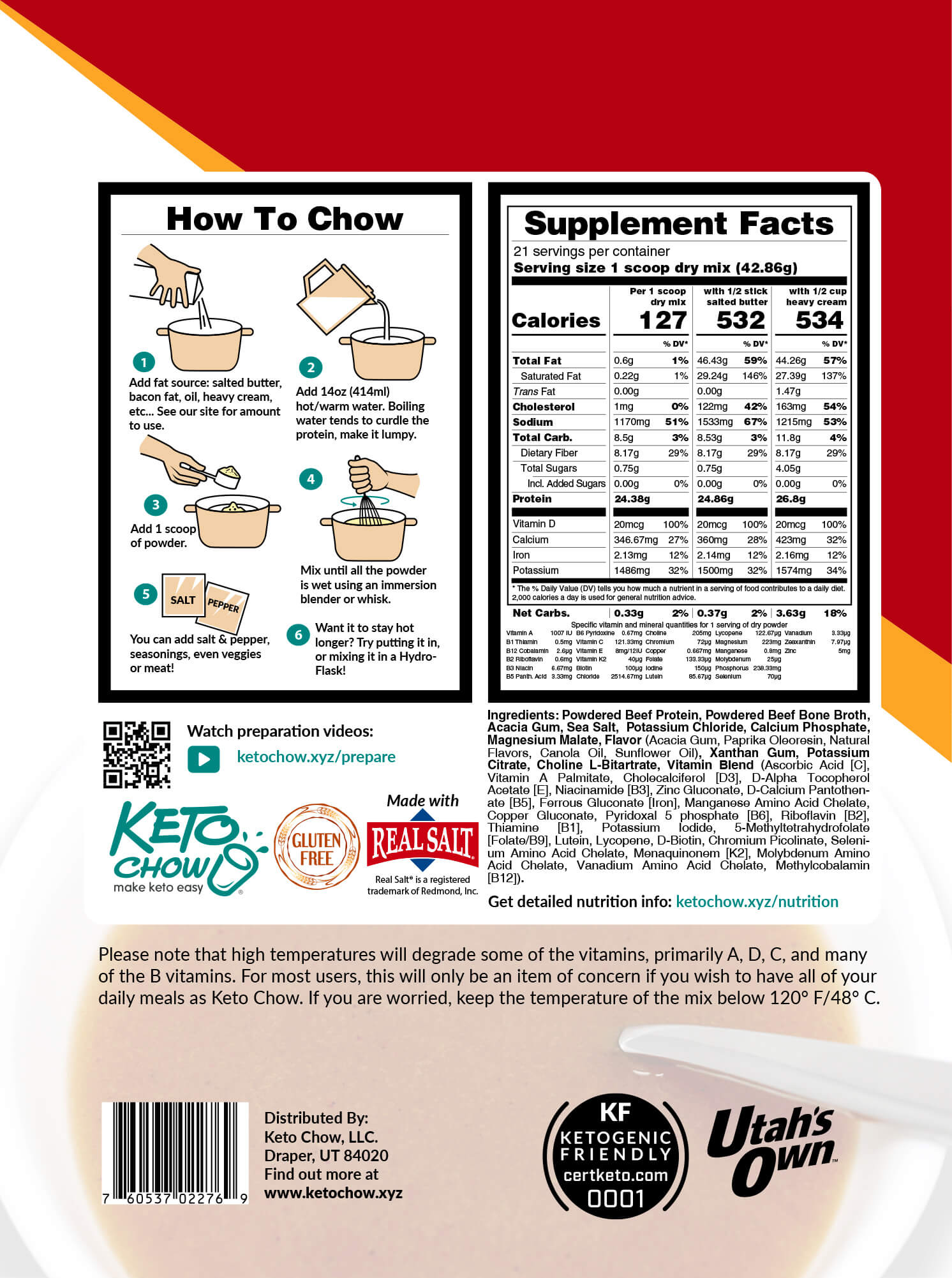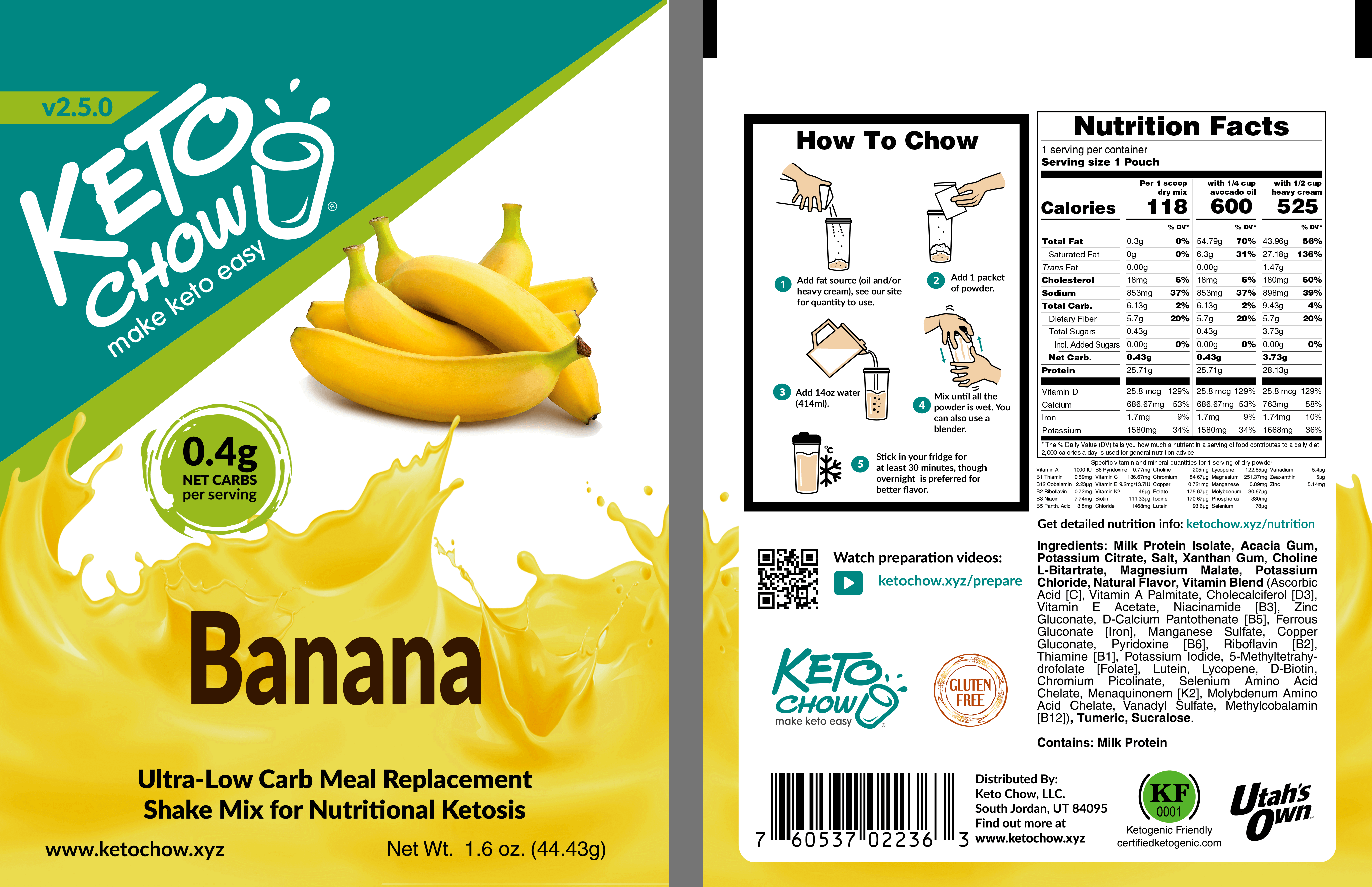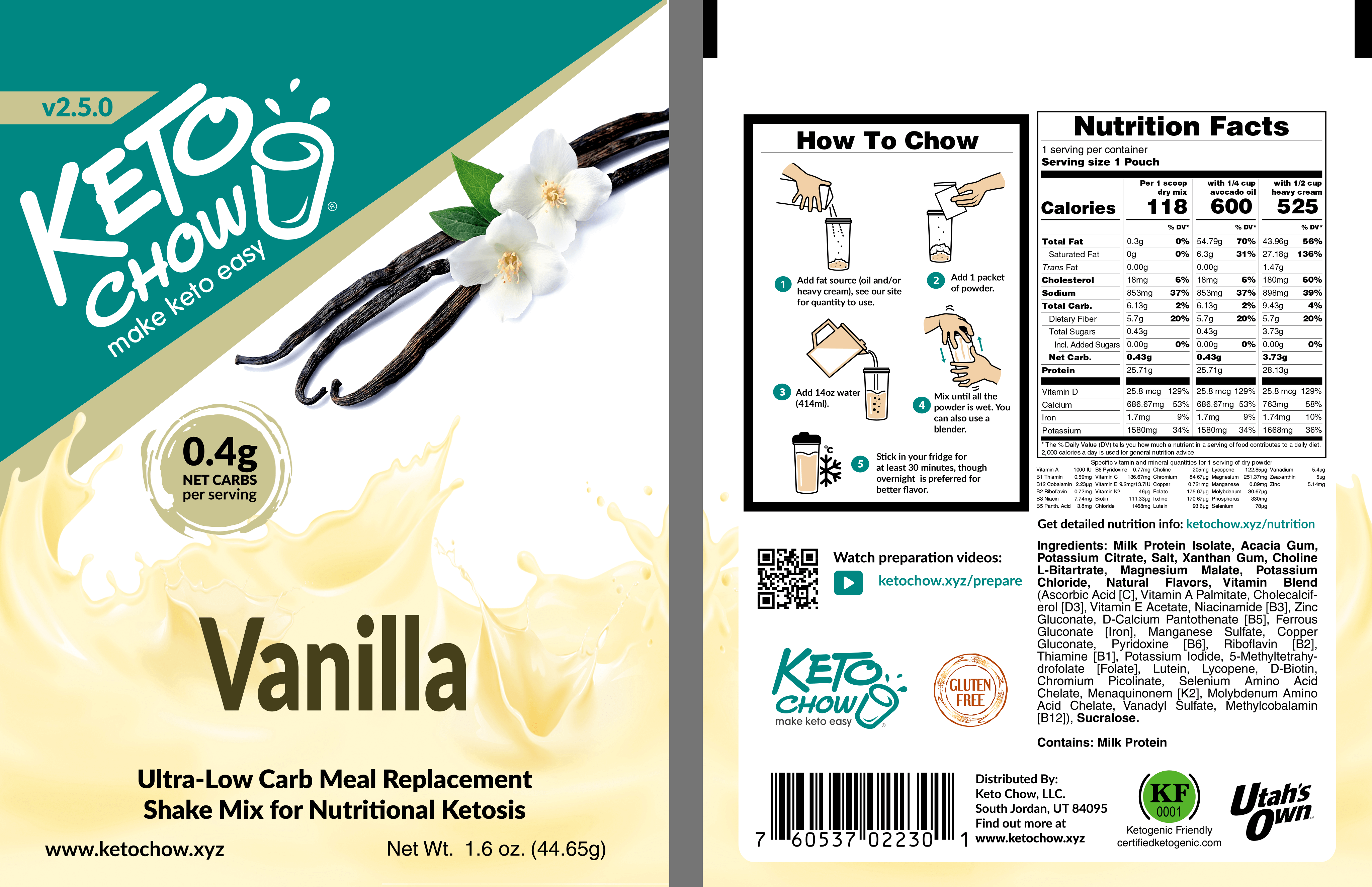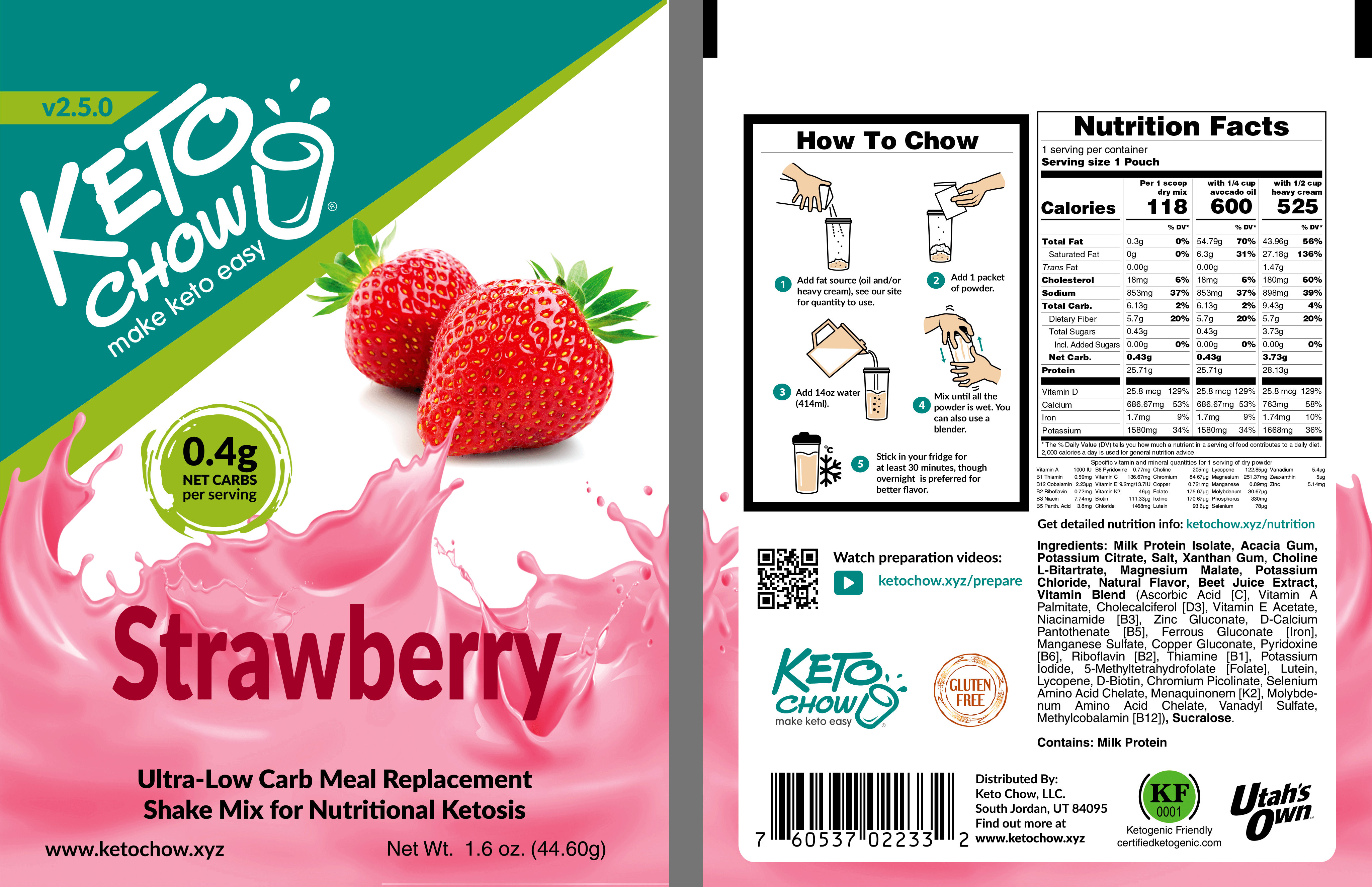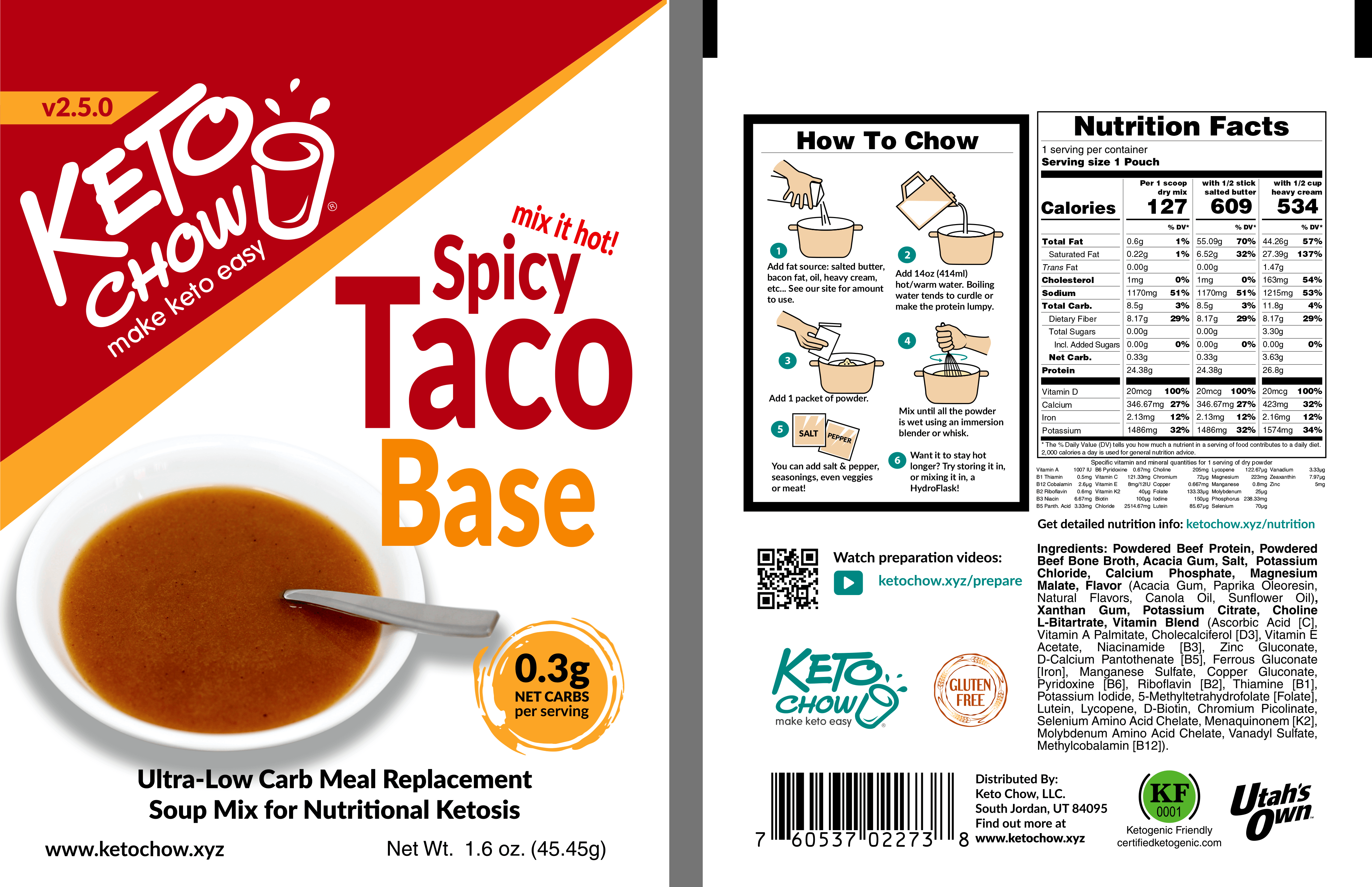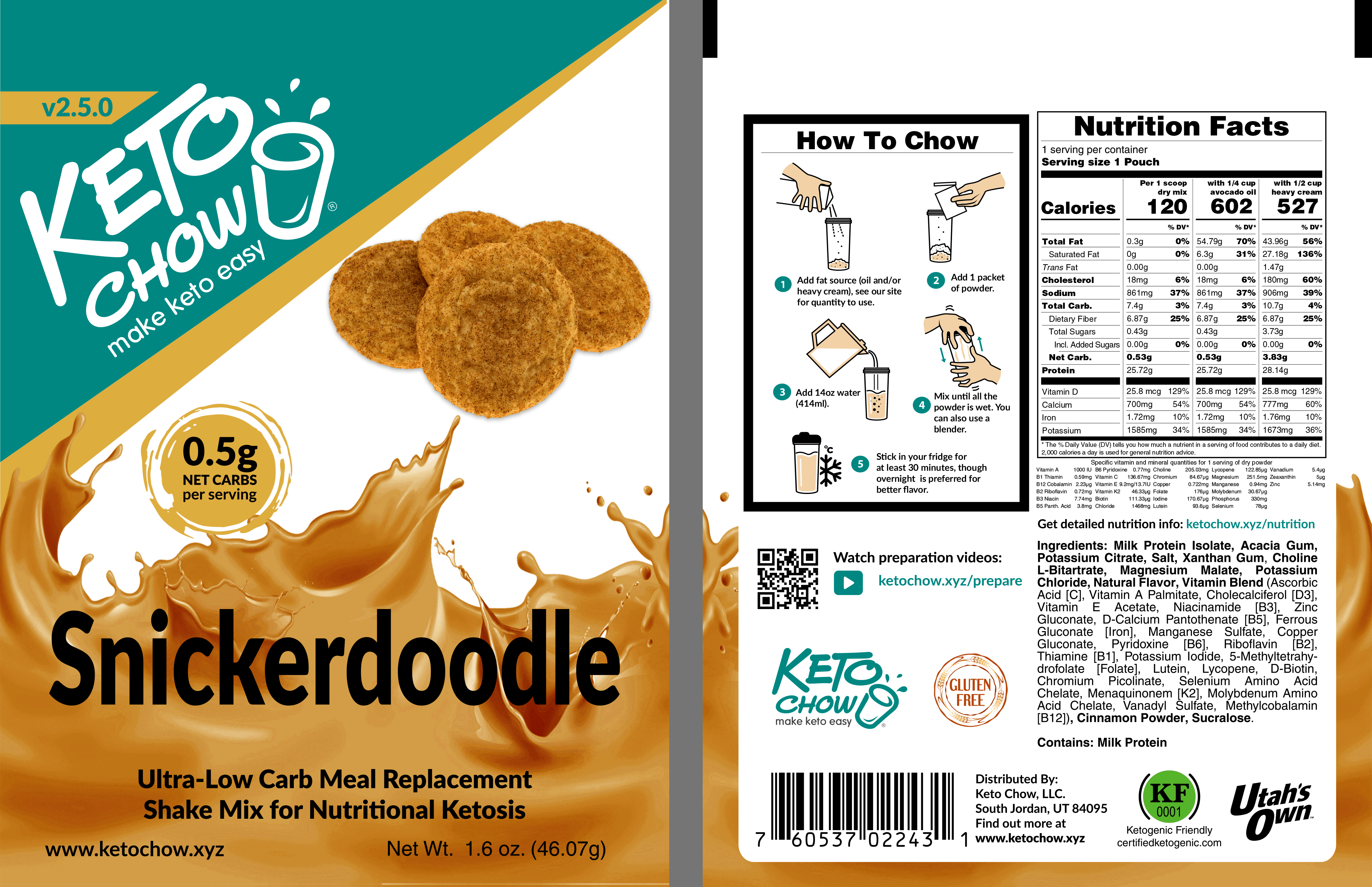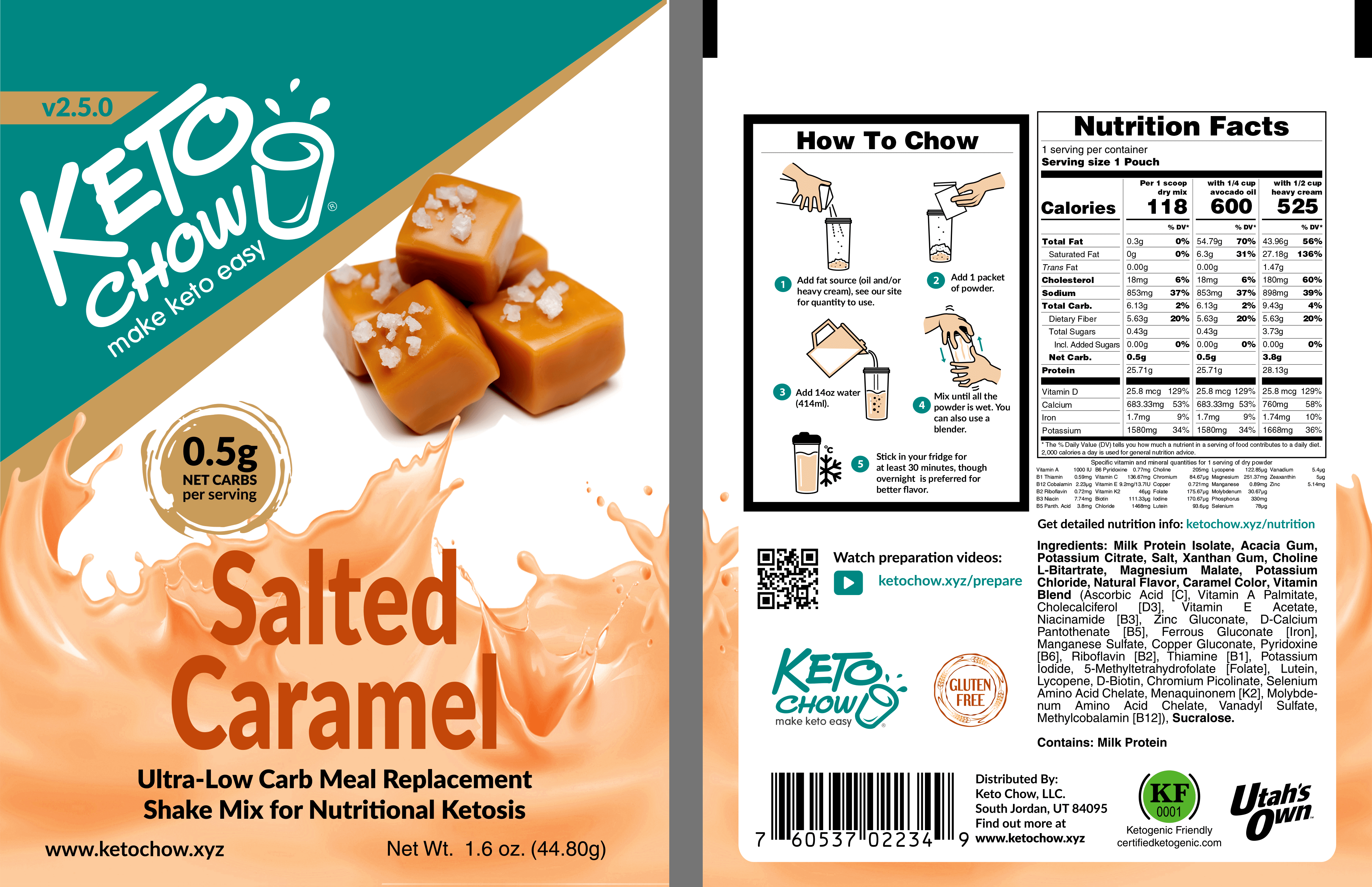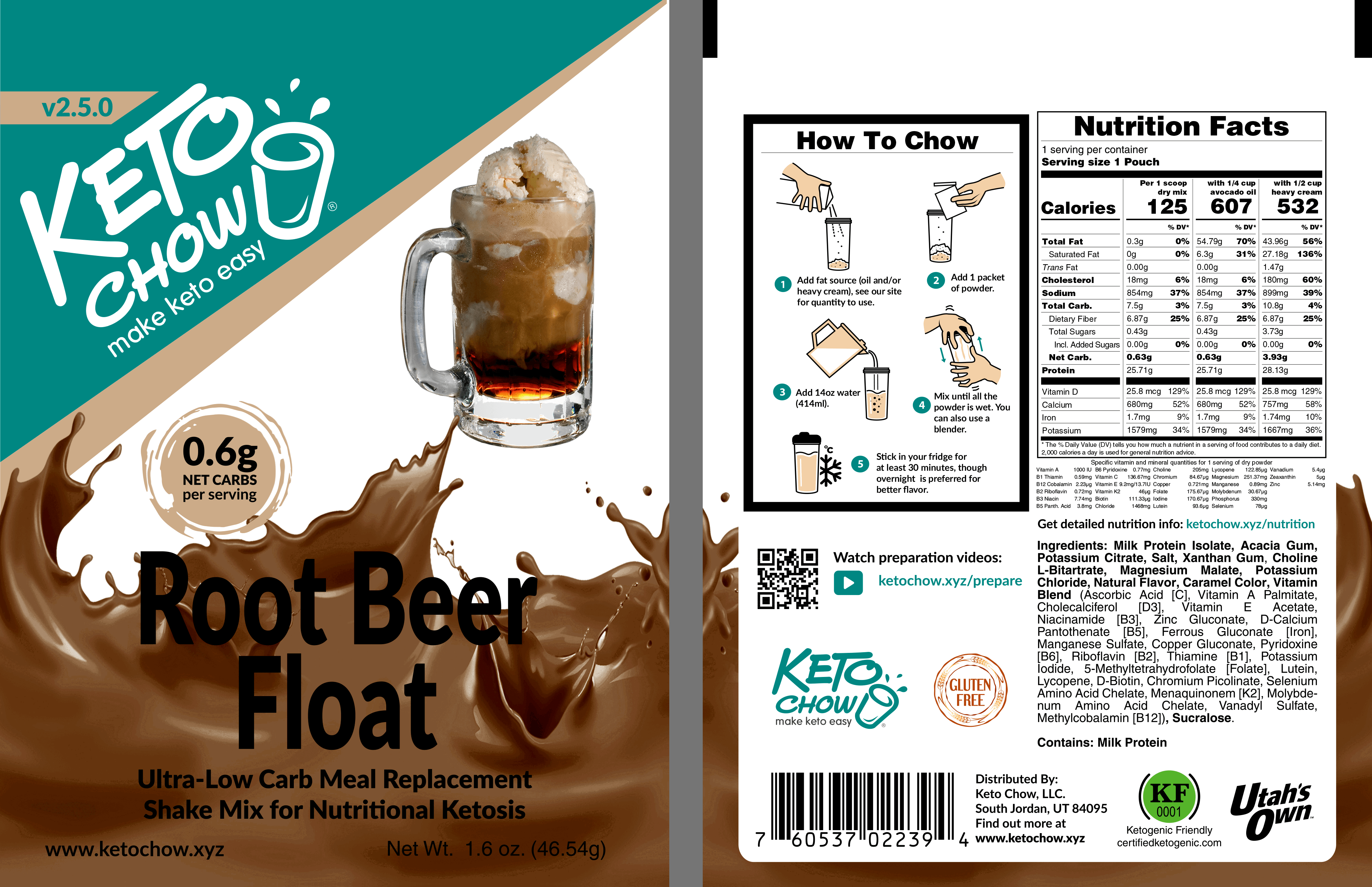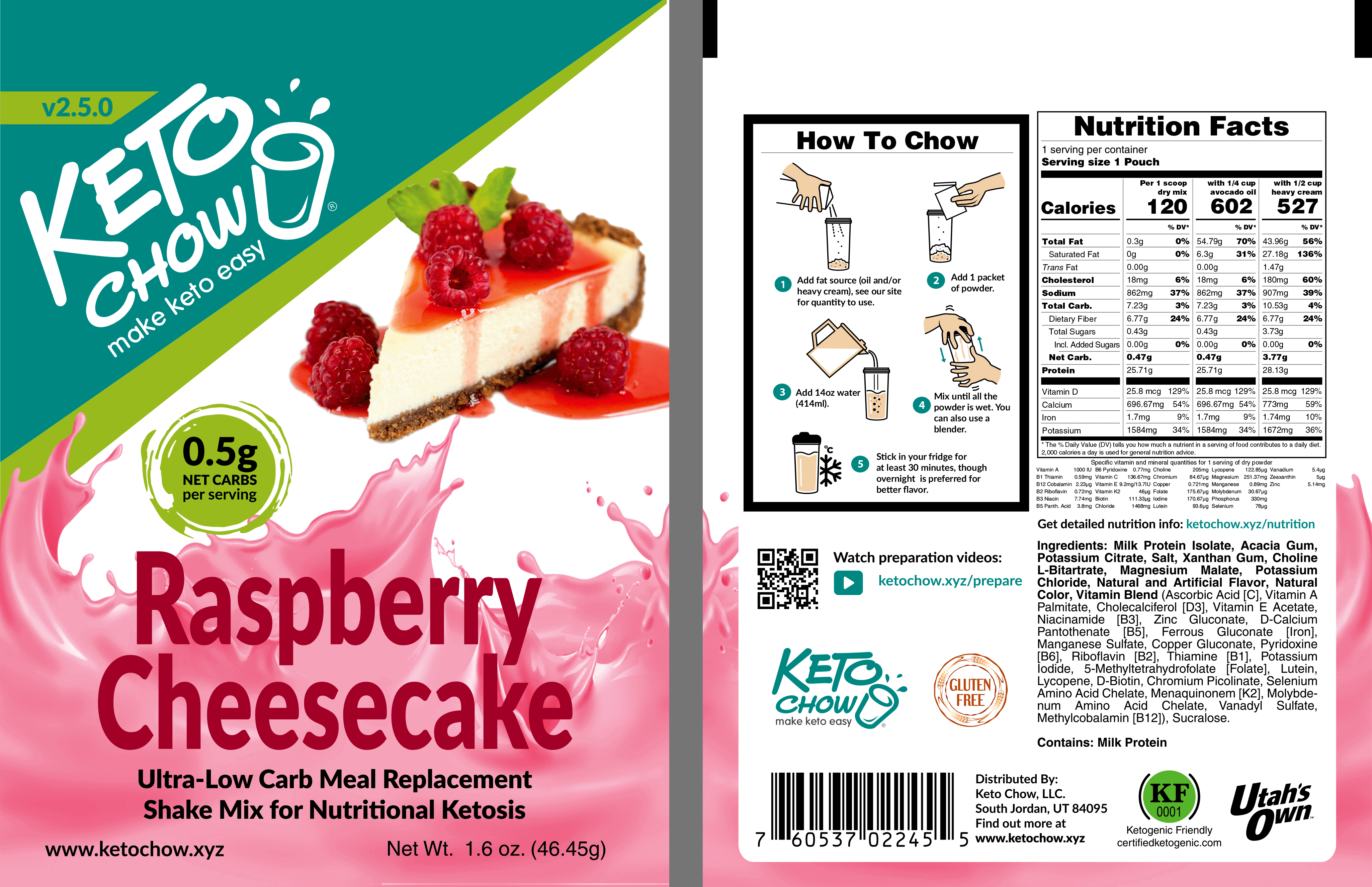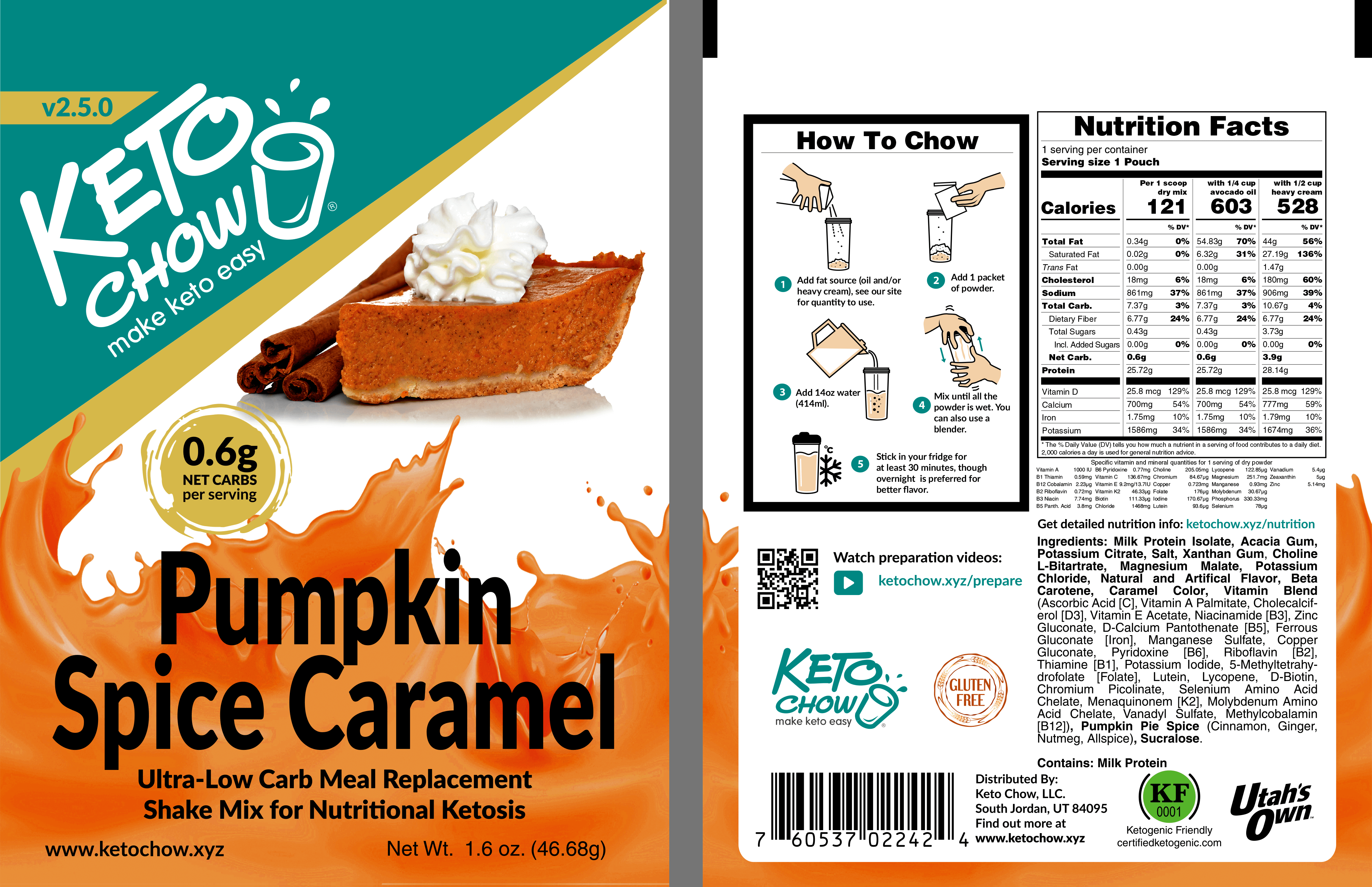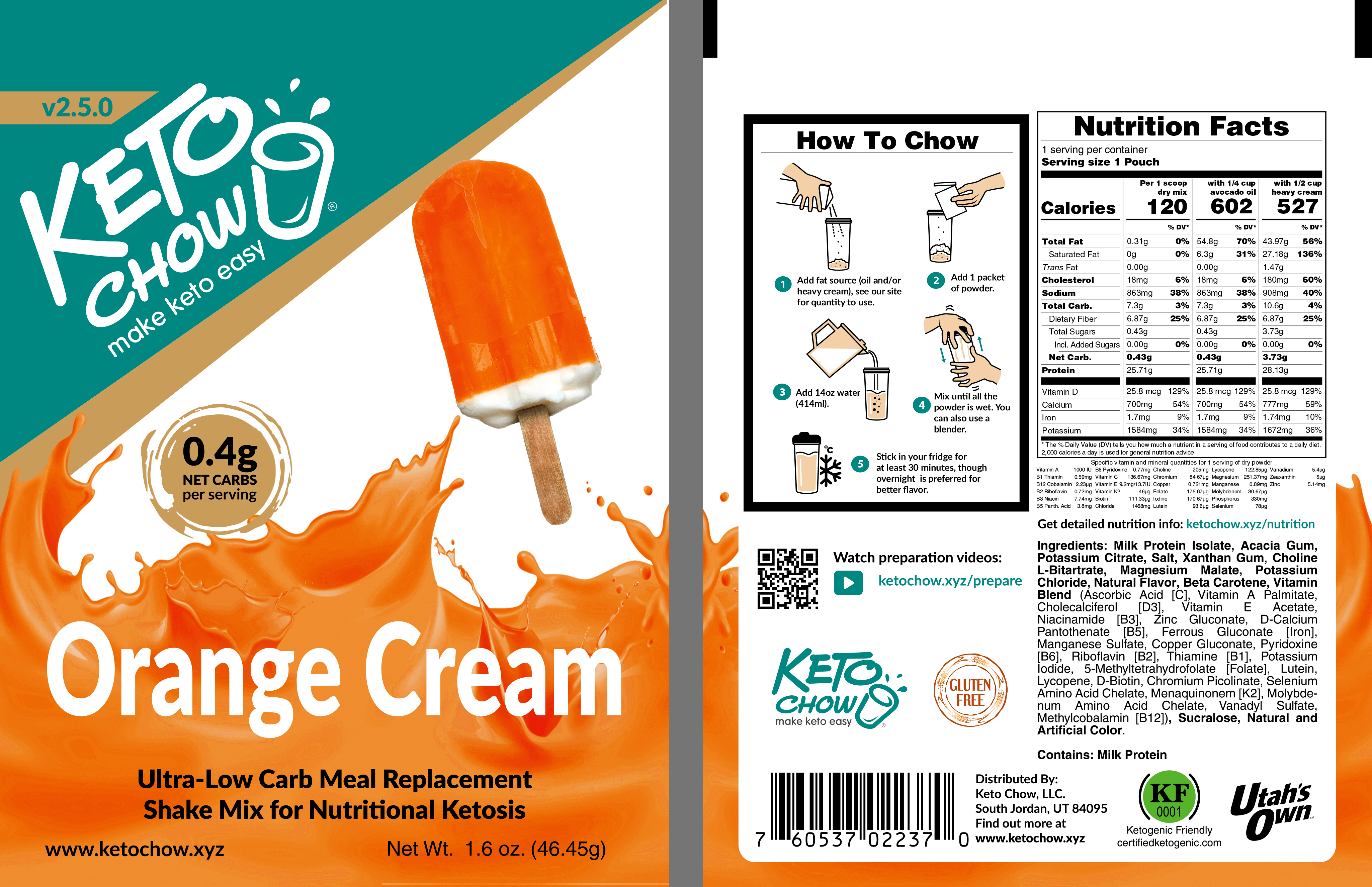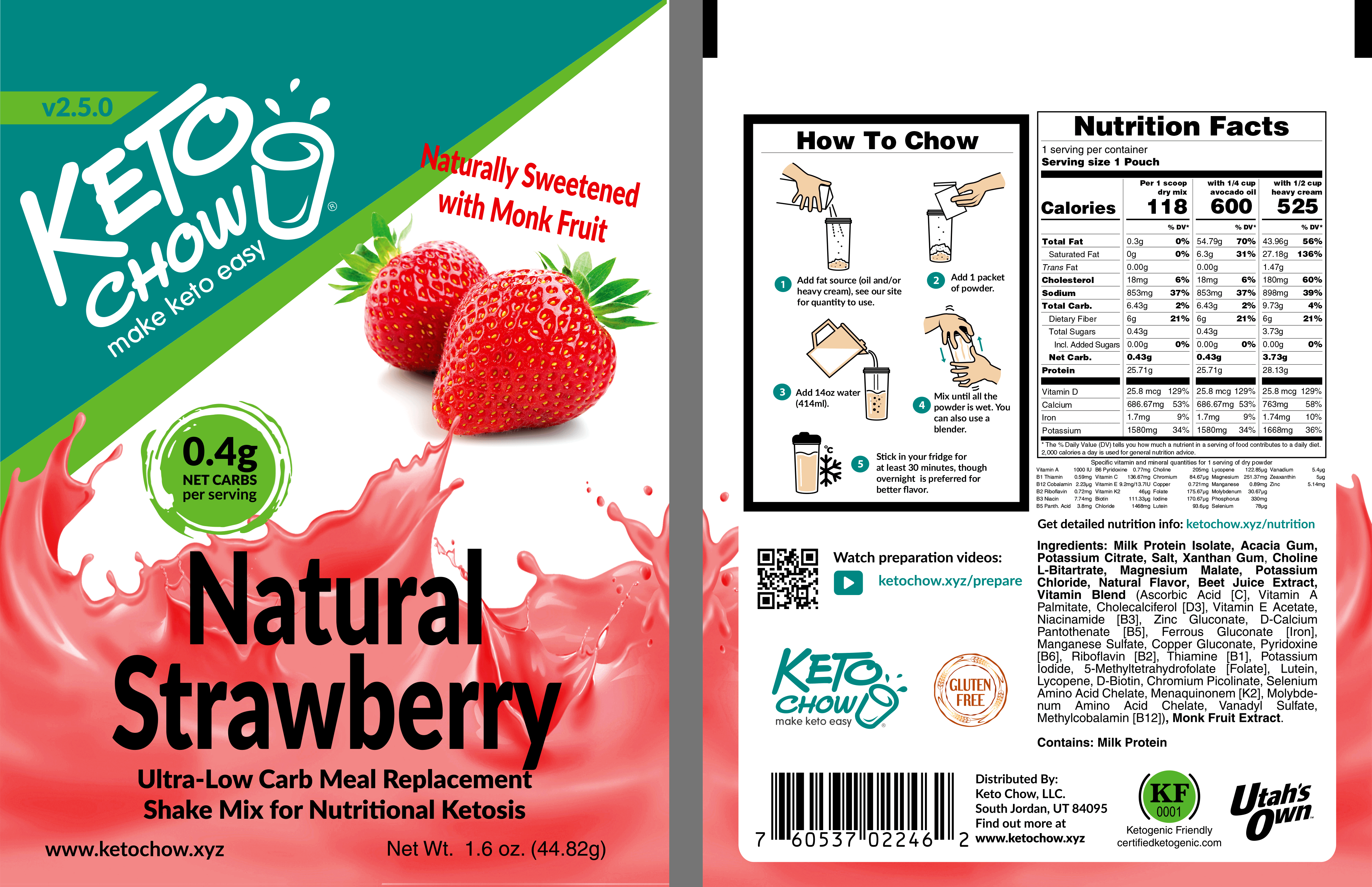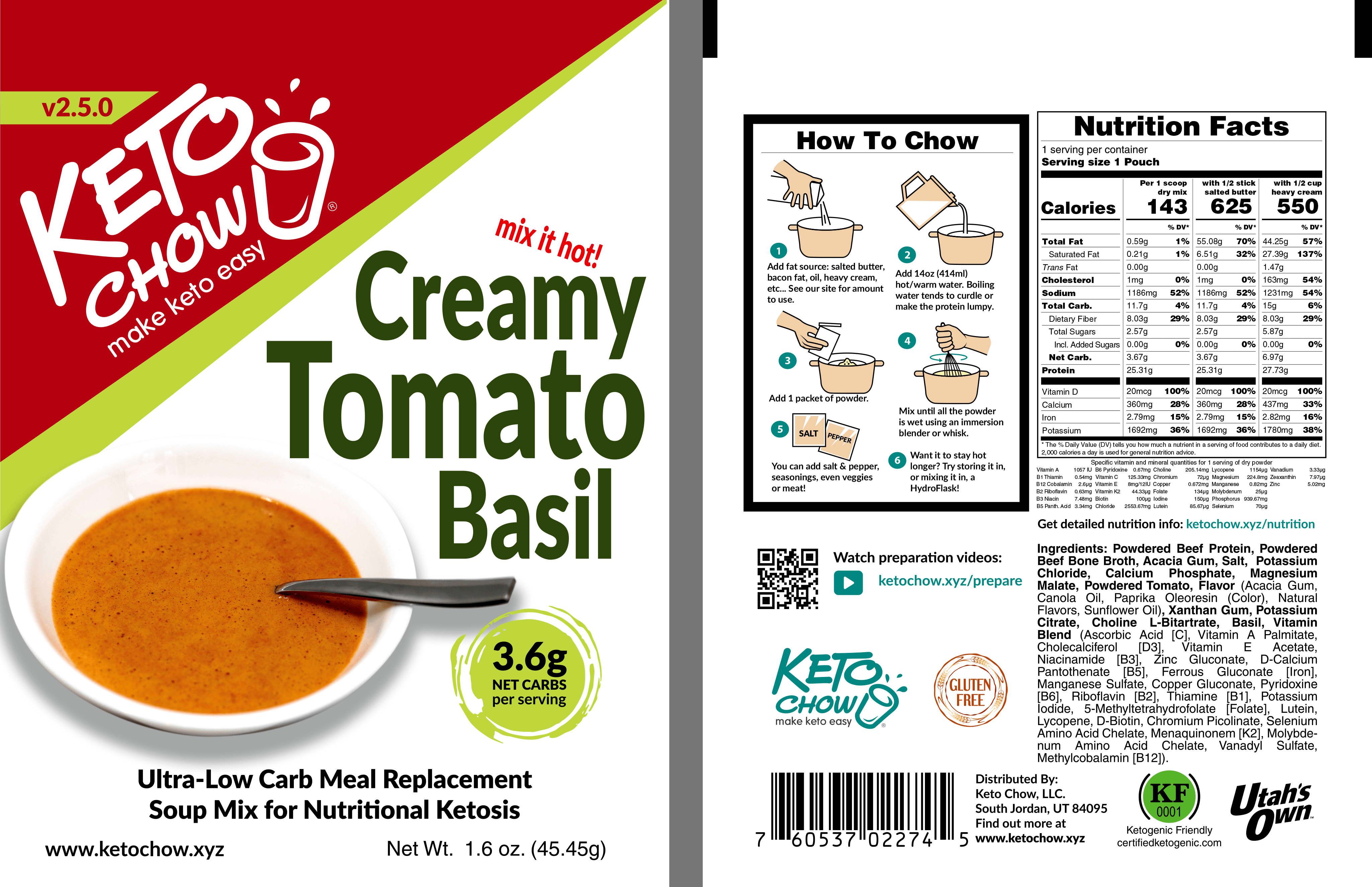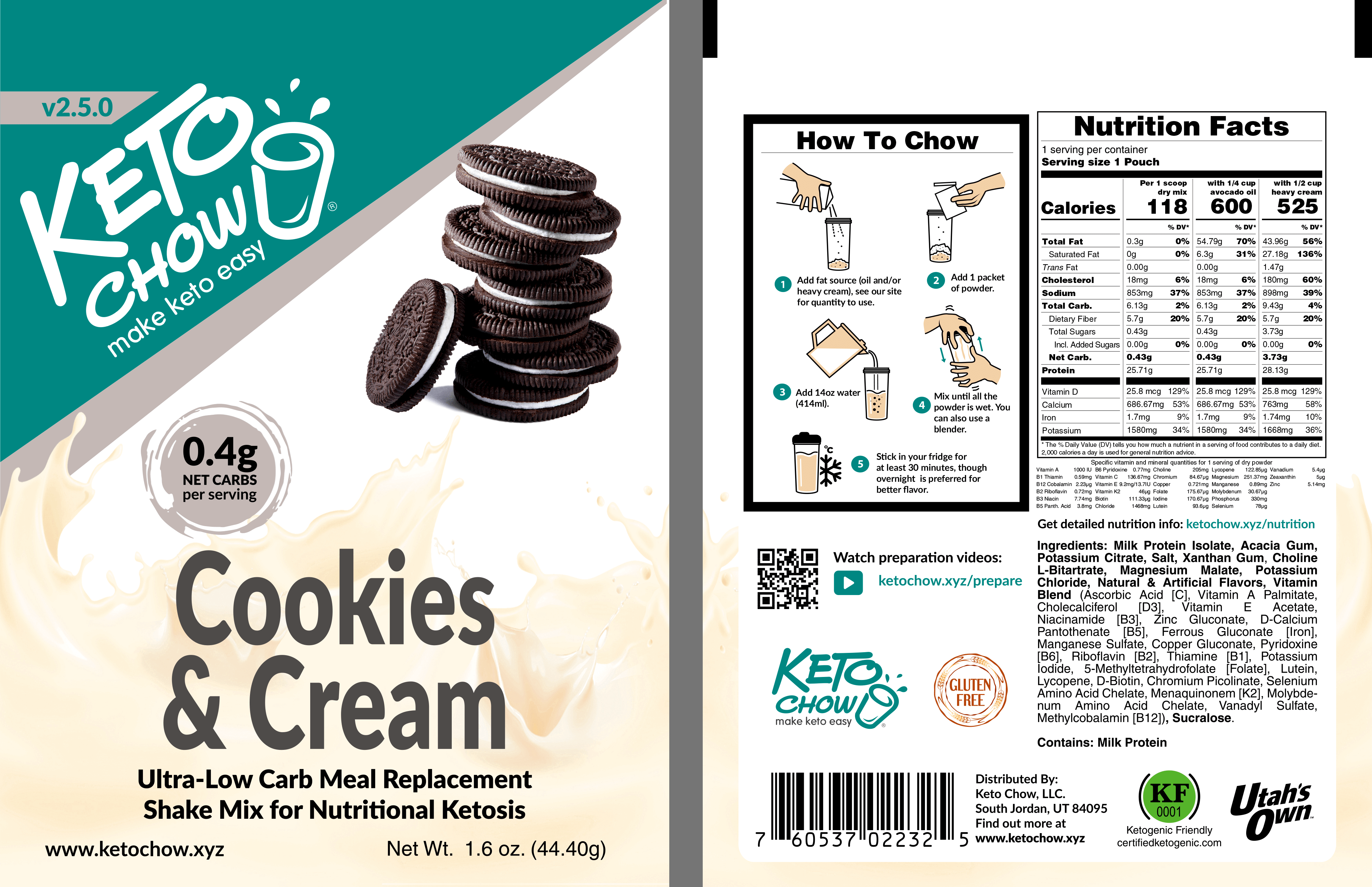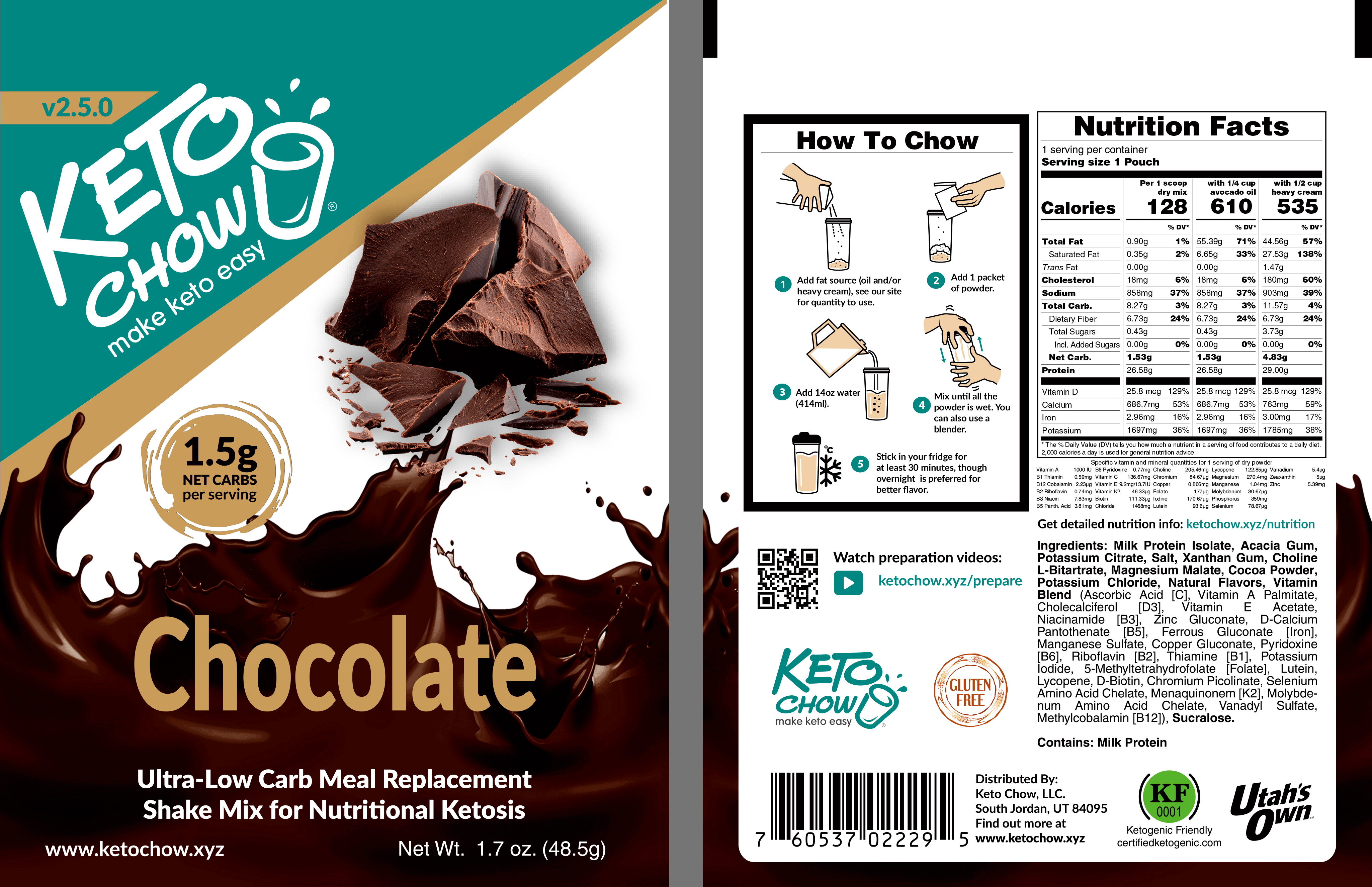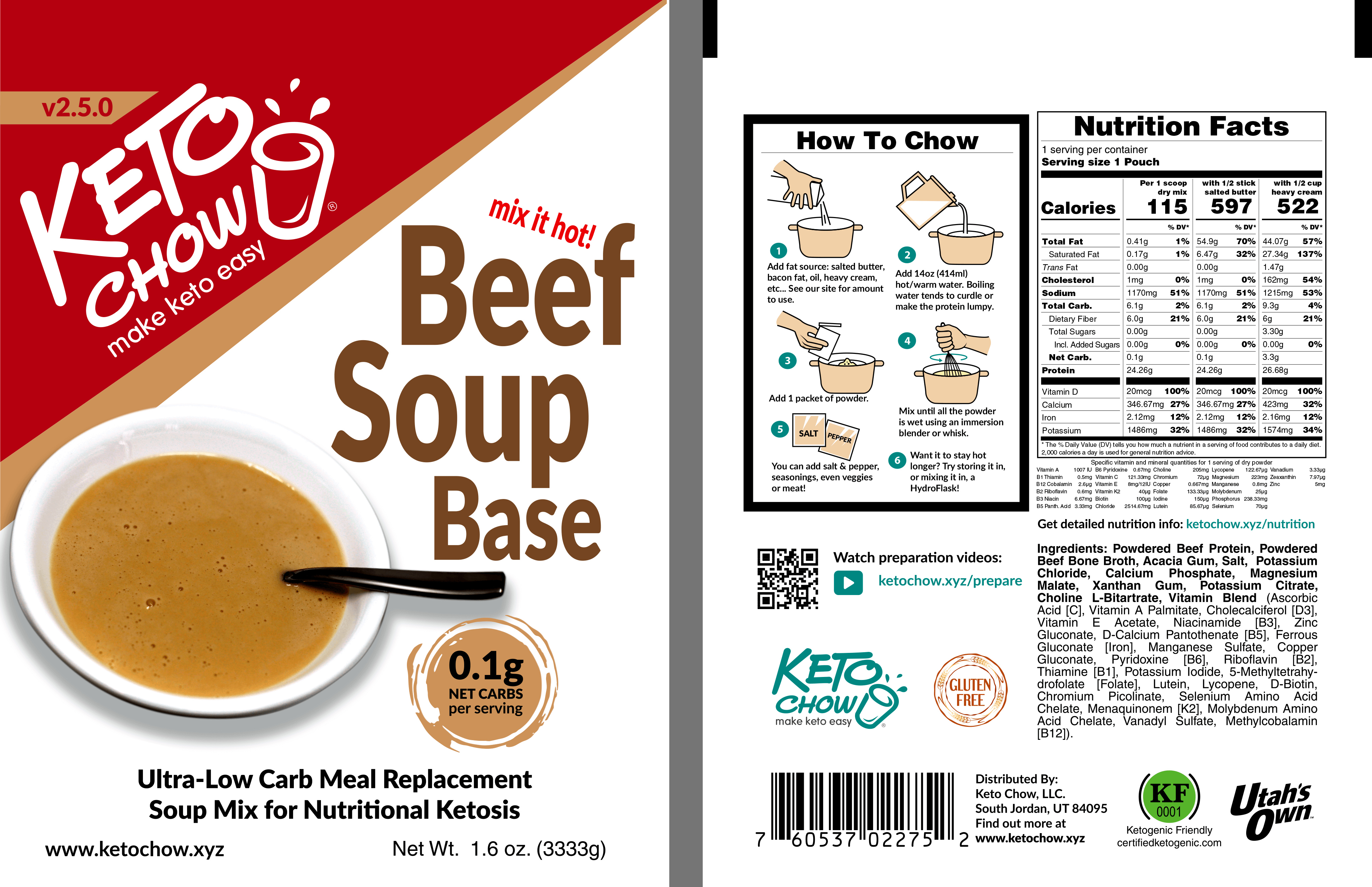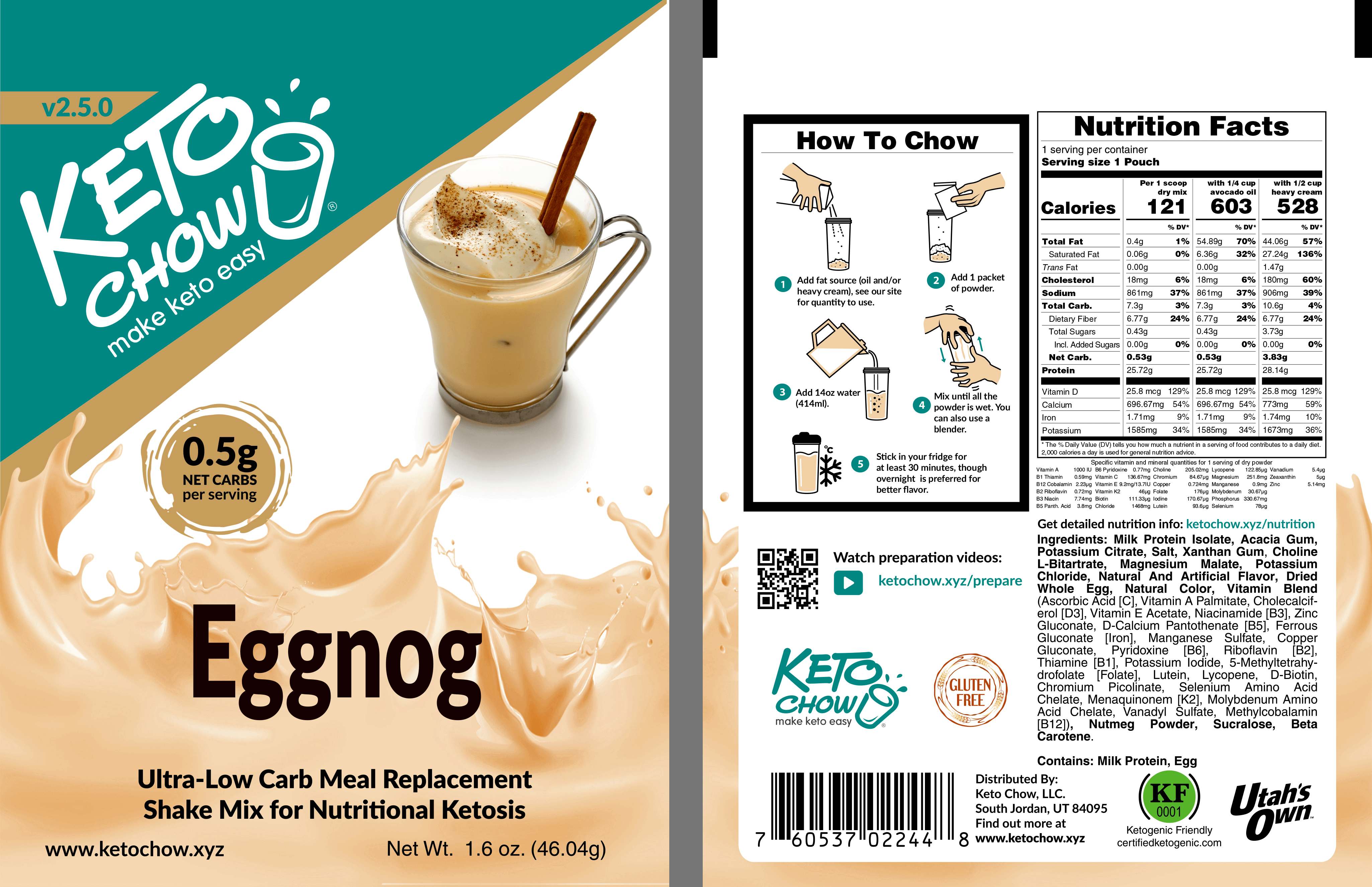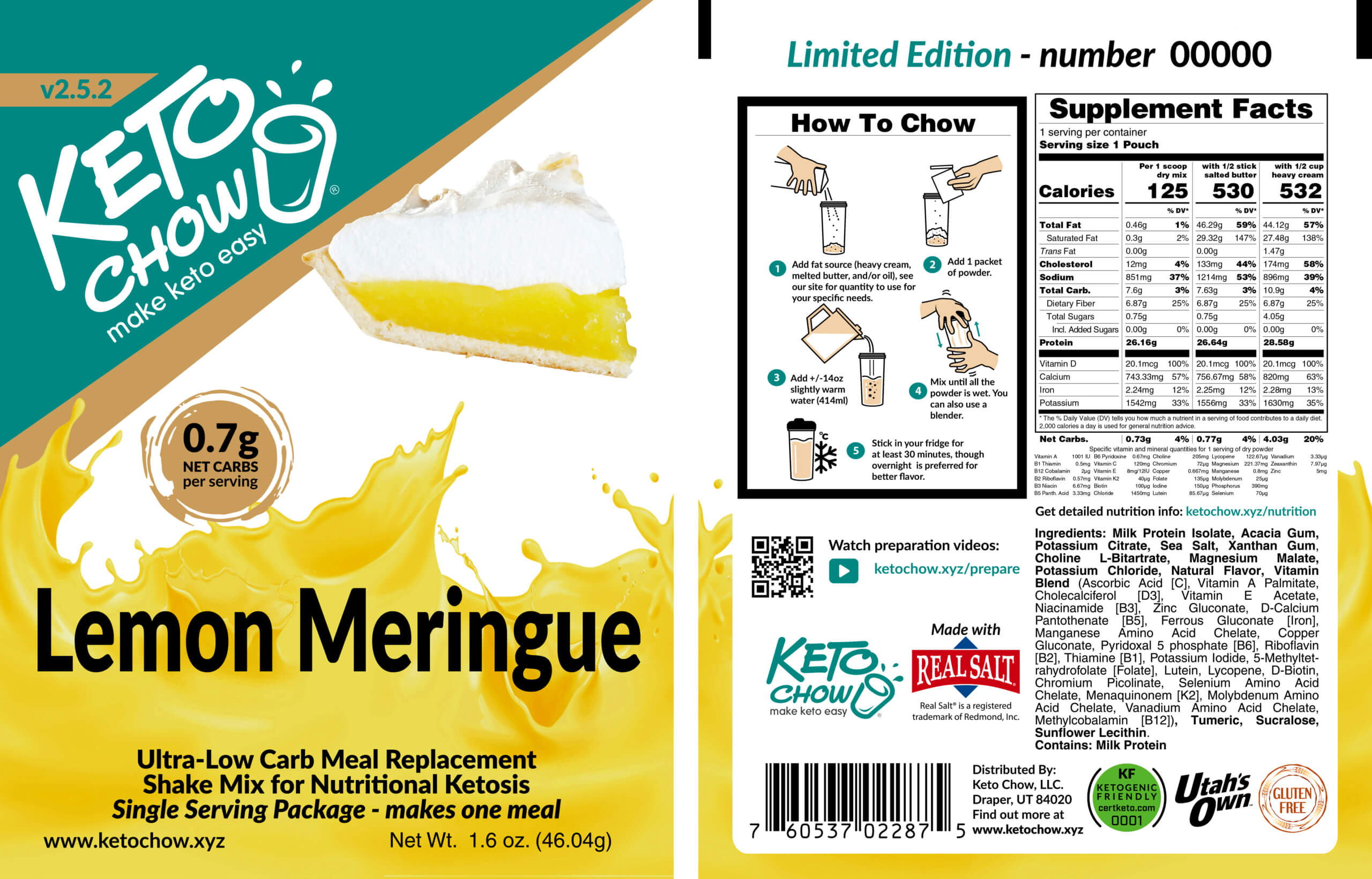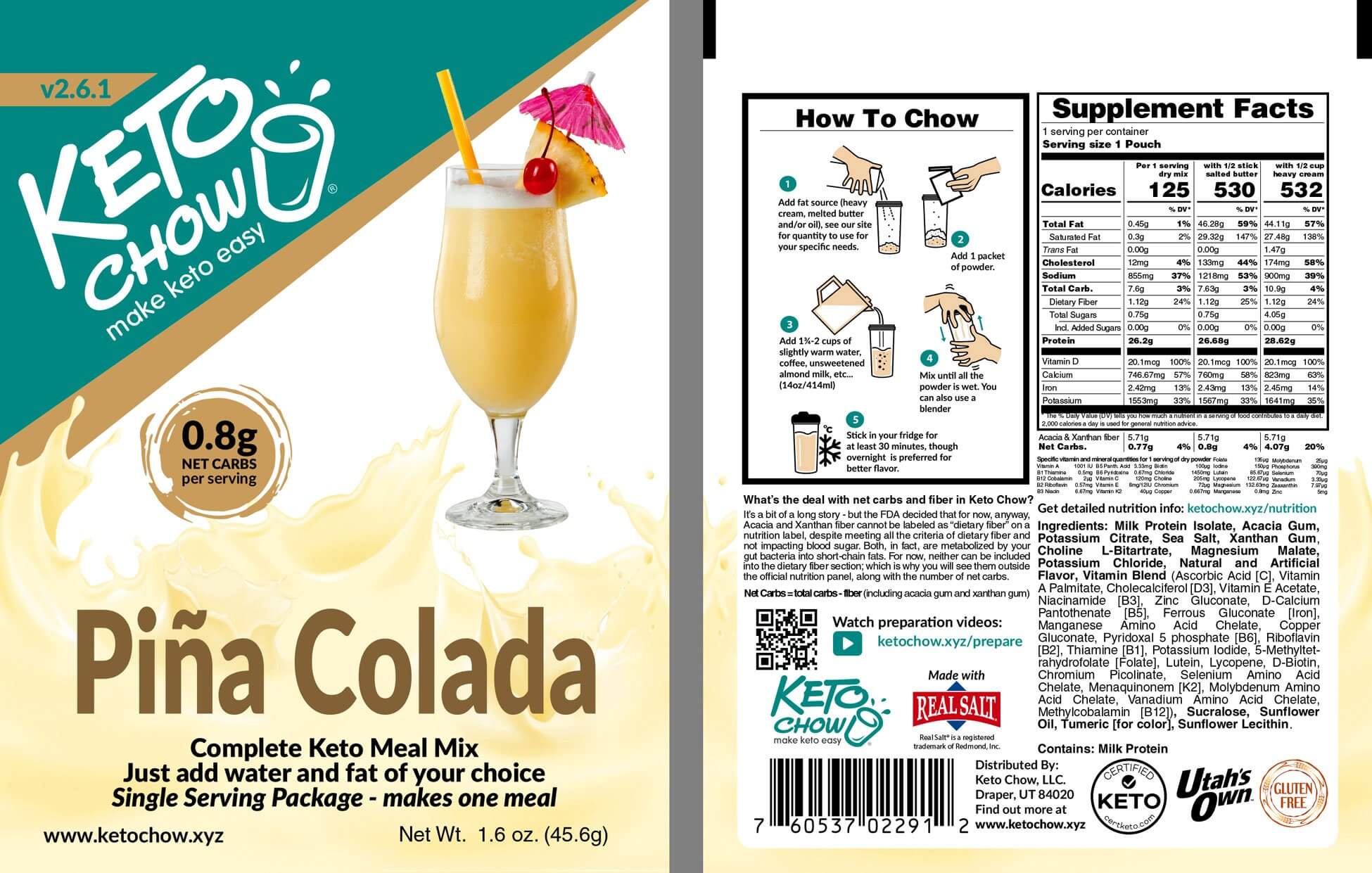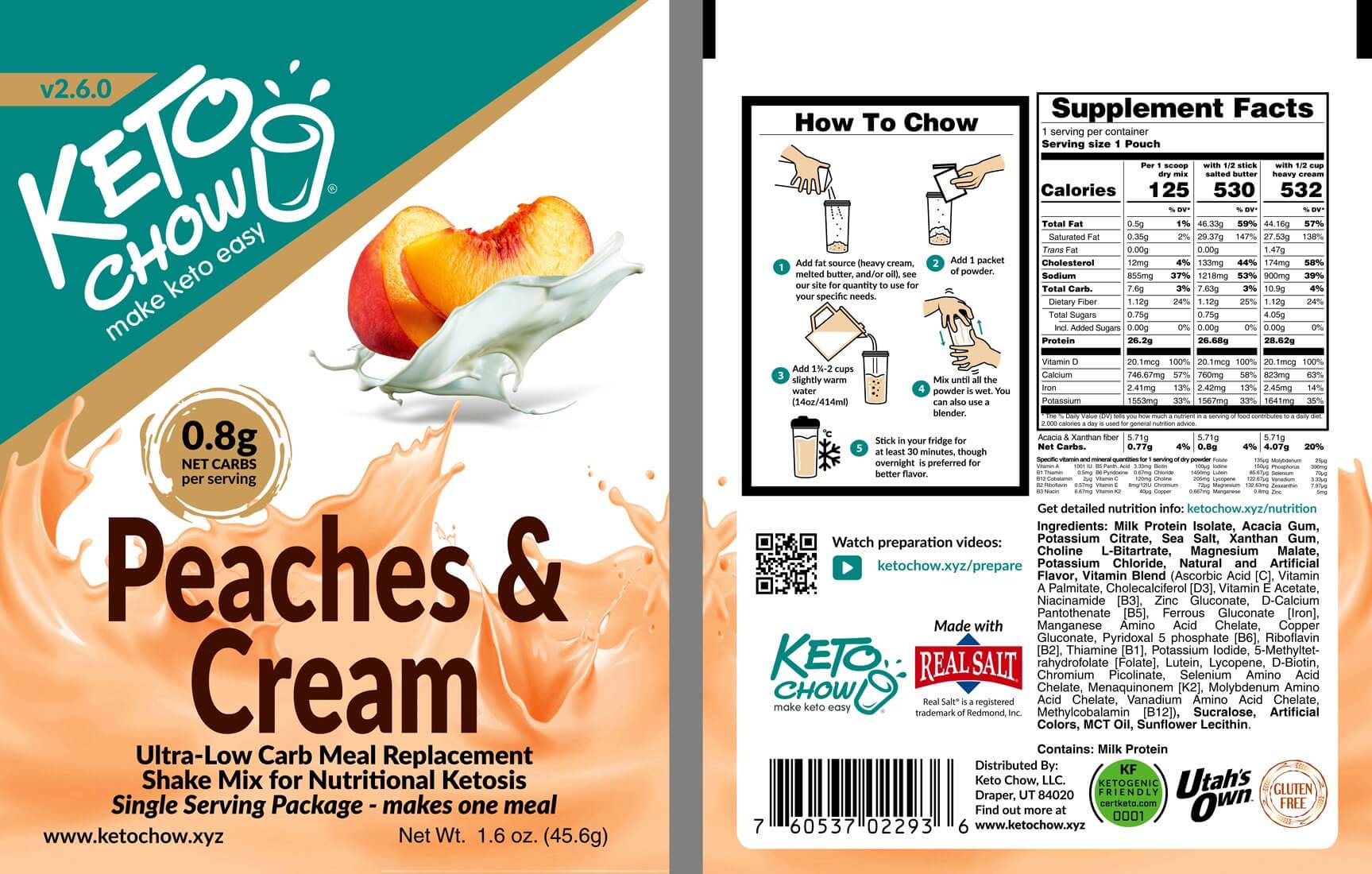One of the main goals of Keto Chow is to be convenient, the second is for it to give you everything you need to thrive: complete nutrition. This page has details about what nutrition is in Keto Chow, a bit about why it’s in there, some information about what’s NOT in Keto Chow, and references to different government guidelines that I may, or may not, consider anachronistic.
TL;DR: Key amounts per serving for Keto Chow shakes:
Nutrition for the Keto Chow Shakes (see below for savory)
Nutrition for Salted Caramel shown above. See the Change Log for a complete list of changes to the recipe.
Ingredients: Milk Protein Isolate, Acacia Gum, Potassium Citrate, Salt, Xanthan Gum, Choline L-Bitartrate, Magnesium Malate, Potassium Chloride, Flavors, Vitamin Blend (Ascorbic Acid [C], Vitamin A Palmitate, Cholecalciferol [D3], D-Alpha Tocopherol Acetate [E], Niacinamide [B3], Zinc Gluconate, D-Calcium Pantothenate [B5], Ferrous Gluconate [Iron], Manganese Amino Acid Chelate, Copper Gluconate, Pyridoxal 5 phosphate [B6], Riboflavin [B2], Thiamine [B1], Potassium Iodide, 5-Methyltetrahydrofolate [Folate/B9], Lutein, Lycopene, D-Biotin, Chromium Picolinate, Selenium Amino Acid Chelate, Menaquinonem [K2], Molybdenum Amino Acid Chelate, Vanadium Amino Acid Chelate, Methylcobalamin [B12]), Sweetener (or not, depends on the specific flavor).
Specific flavors also contain: Peanut Flour, Cocoa Powder, Coffee Powder, Caffeine, Caramel Color, Tumeric (for color), Beet Juice Extract (for color), Artificial Flavor. See the flavor labels below for more information.
Contains: Milk, the Chocolate Peanut Butter flavor contains peanuts.
Think that’s a lot of “chemicals” with crazy sounding names? check this out (high-res PDF version).
Typical Amino Acid Profile – per serving of dry powder, 25.77g total amino acids
|
|
Nutrition for the Keto Chow Savory Soups
Nutrition for v2.5 Beef Soup Base shown above . See the Change Log for a complete list of changes to the recipe.
Ingredients: Powdered Beef Protein, Powdered Beef Bone Broth, Acacia Gum, Salt, Potassium Chloride, Calcium Phosphate, Magnesium Malate, Xanthan Gum, Potassium Citrate, Choline L-Bitartrate, Vitamin Blend (Ascorbic Acid [C], Vitamin A Palmitate, Cholecalciferol [D3], D-Alpha Tocopherol Acetate [E], Niacinamide [B3], Zinc Gluconate, D-Calcium Pantothenate [B5], Ferrous Gluconate [Iron], Manganese Amino Acid Chelate, Copper Gluconate, Pyridoxal 5 phosphate [B6], Riboflavin [B2], Thiamine [B1], Potassium Iodide, 5-Methyltetrahydrofolate [Folate/B9], Lutein, Lycopene, D-Biotin, Chromium Picolinate, Selenium Amino Acid Chelate, Menaquinonem [K2], Molybdenum Amino Acid Chelate, Vanadium Amino Acid Chelate, Methylcobalamin [B12]).
Specific flavors also contain: Powdered Tomato, Paprika Oleoresin (color), Natural Flavors, Canola Oil (<0.1g in the flavoring), Sunflower Oil (<0.1g in the flavoring). See the flavor labels below for more information.
Contains no dairy nor sweeteners, natural or otherwise.
Think that’s a lot of “chemicals” with crazy sounding names? check this out (high-res PDF version).
Typical Amino Acid Profile – per serving of dry powder
|
|

For tracking your nutrition, we recommend using Cron-O-Meter. Check out our page with info on how to use it with Keto Chow.
Contains
Doesn’t Contain
Notes on why some ingredients are used and others are avoided
Acacia Gum and Fiber Levels
In a previous version, Keto Chow utilized Psyllium Husk powder for fiber. I’m very happy that we switched over to Acacia Gum. It’s water soluble so it has no texture and has some great benefits for ketosis and general gut health. Notably, it’s fermented by gut bacteria into short chain fatty acids that make keto happy.
What you won’t find in Keto Chow is the FDA recommended 28g of dietary fiber per day. I had considered adding additional acacia gum but was reminded about some fun fiber facts on the HighSteaks site
The simple idea that we should be filling our digestive systems with something indigestible is utter madness.
Seek out the evidence for yourself – here’s a hint, there’s none whatsoever that fiber is something you should be consuming much of (if any), and almost certainly should NOT be supplementing.
Sure, eat some foods which happen to be rich in fiber if you like them and can tolerate them well, but it’s not the fiber that makes them worth eating.
The go-to line about it all: “Fiber is great – if you live on junk food.”
Artificial Sweeteners
Keto Chow uses 0.08g (80mg) of sucralose, most commonly known by the brand name Splenda but without the maltodextrin you get in store-bought Splenda. Why? Otherwise, it’s rather bland. If you’re concerned, you can read the Wikipedia page regarding sucralose and draw your own conclusions. We don’t use any other artificial sweeteners (Acesulfame Potassium, Aspartame, Saccharin). We also do not use Maltitol or any other sugar alcohol.
We don’t use anything but sucralose because there really isn’t a need to do so. By limiting the number used, it simplifies things greatly – fewer questions to answer. It should be noted that if you do not like sucralose or want to use your own flavoring, we have the “Natural Strawberry” which uses monk fruit as a sweetener, and we have the Keto Chow Base Powder available as an option. It contains all of the vitamins, minerals and other ingredients EXCEPT for the protein, the sweetener, and the flavoring. You mix it with a protein of your choosing.
Peanuts
Our primary manufacturing facility has an employee that’s allergic to peanuts – producing the Chocolate Peanut Butter flavor (which contains actual peanut flour, not just peanut flavor) at that facility was not an option. Instead, the Chocolate Peanut Butter flavor is mixed and packaged at a different location. The result is that all of our flavors, except chocolate peanut butter, are completely peanut free.
Note: if you have a previous version (1.0.4, 1.5, or 1.9) of Keto Chow, it was mixed on the same machine that did the peanut butter flavor and should NOT be consumed by anyone with a peanut allergy. We did do a bang-up job cleaning the machine every time we did peanut but it’s not worth the risk.
Electrolytes and Saltiness
Depending on your taste and how long you let Keto Chow “rest” in the fridge after mixing (30 minutes minimum, overnight preferred), you may find Keto Chow rather salty at first. This isn’t by accident, it’s an essential feature.
When you do keto, your body will burn through electrolytes rather quickly. There are several mechanisms at work that cause this but the end result is that you need higher than normal electrolyte amounts. If you don’t get enough you may experience nausea, cramping, fatigue and other flu-like symptoms. This is why the condition is commonly referred to as “Keto Flu”. The fix is easy: get some sodium, potassium, and/or magnesium. Keto Chow, by design, should allow you to completely avoid the Keto Flu, so long as your other meals (if you’re eating other keto food) contain sufficient electrolytes.
Most people find that the saltiness goes away after letting it refrigerate overnight (or longer). You may also actually start to crave the saltiness as your body adjusts to ketosis and the higher electrolyte requirements.
No Soy Protein or Soy Lecithin
Soy is a funny thing. There’s a lot of “well I heard it from a dude at the gym that soy gives you cancer” information running around. There is very, very little scientific information based on studies to back up the concerns about phytoestrogens in soy protein causing problems in vivo with humans. Regardless: Keto Chow does not use any soy protein (which is the problem-child and what people can be allergic to) or soy ANYTHING.

